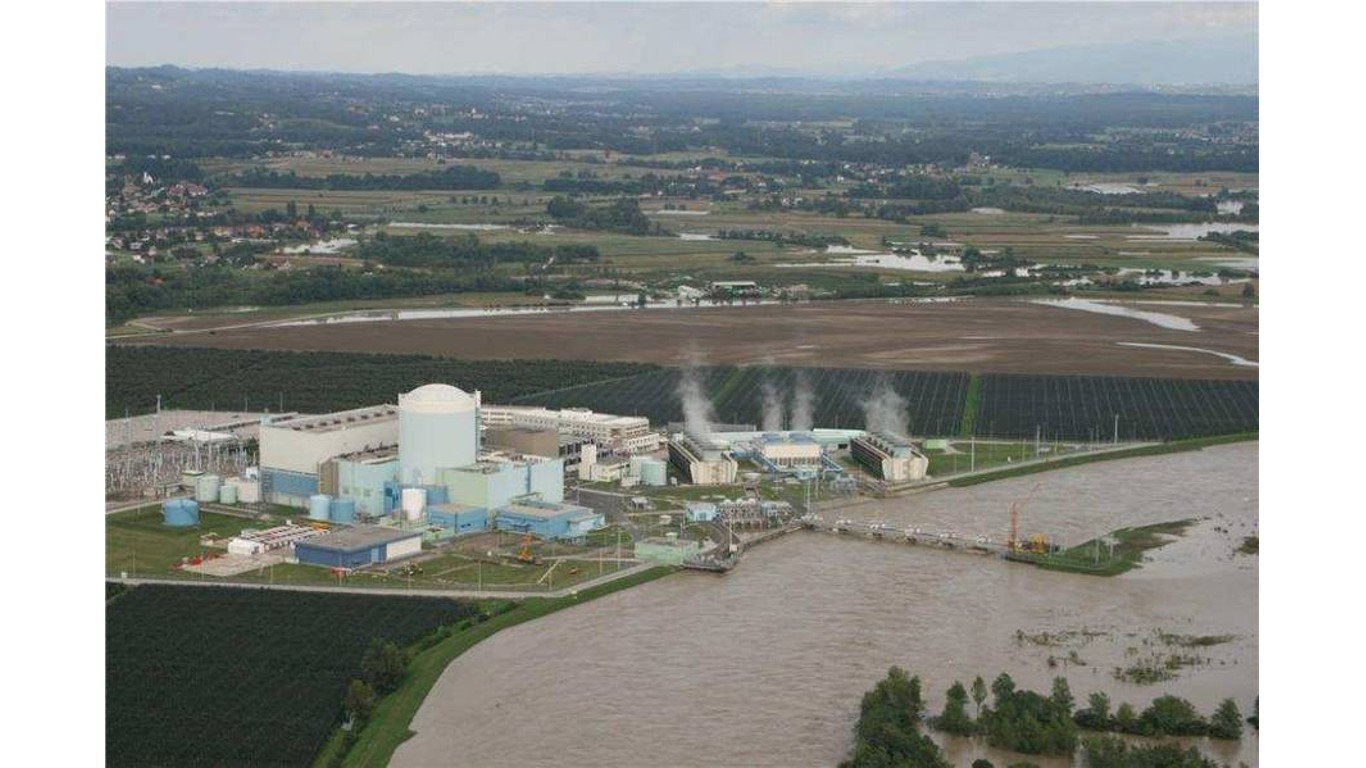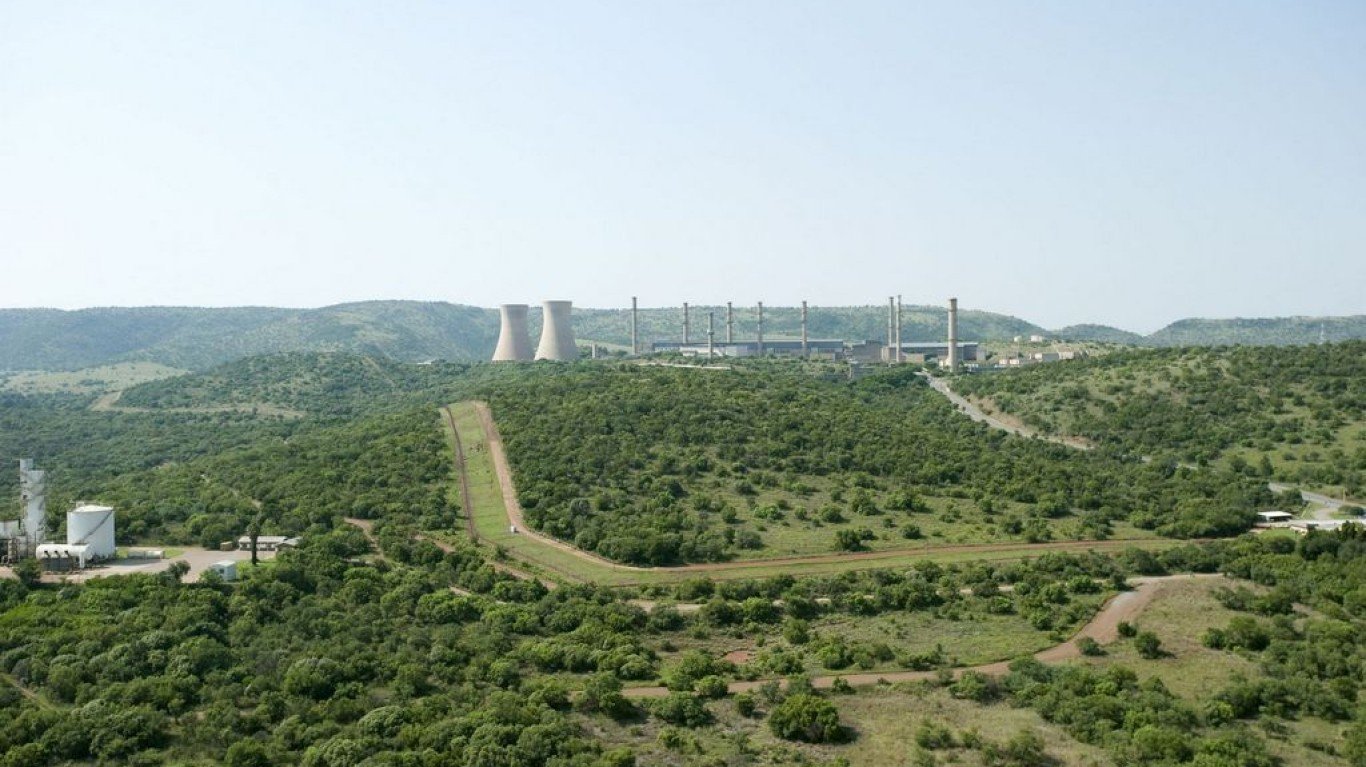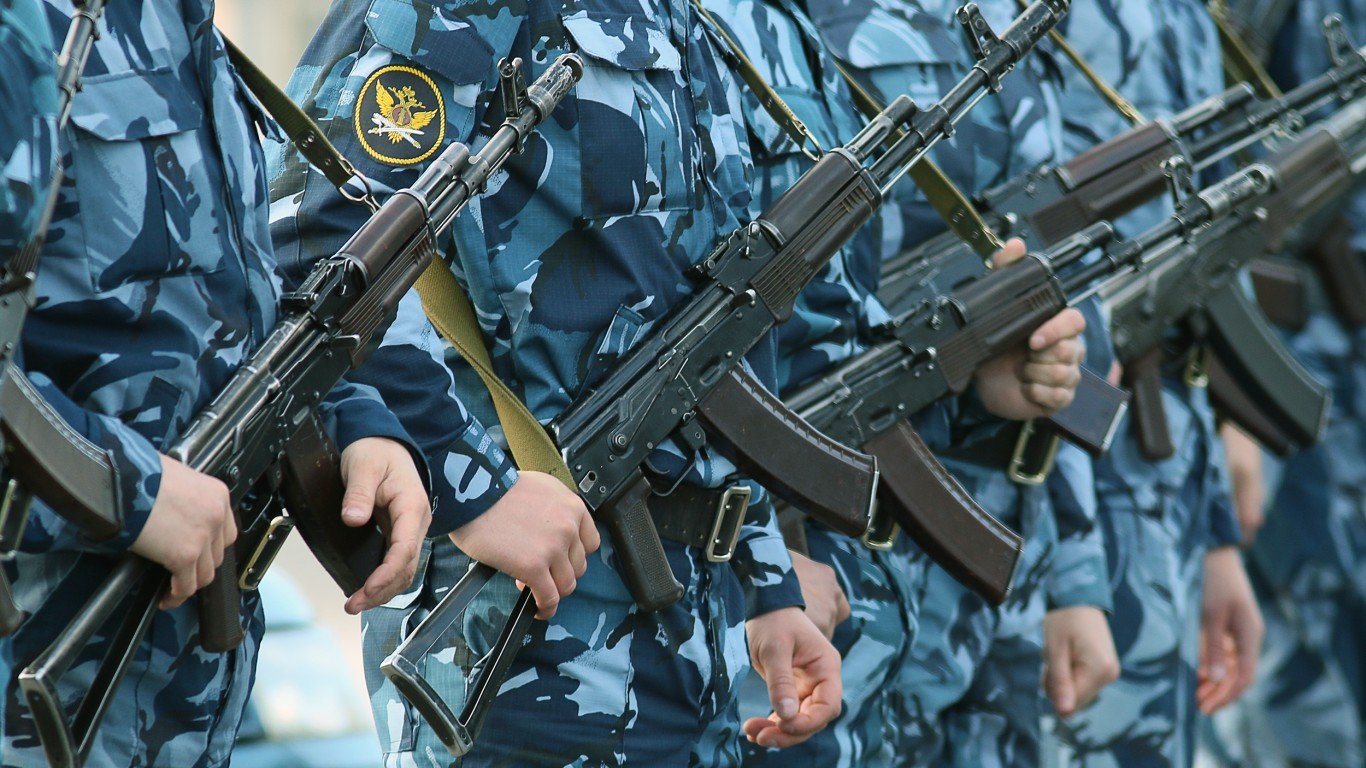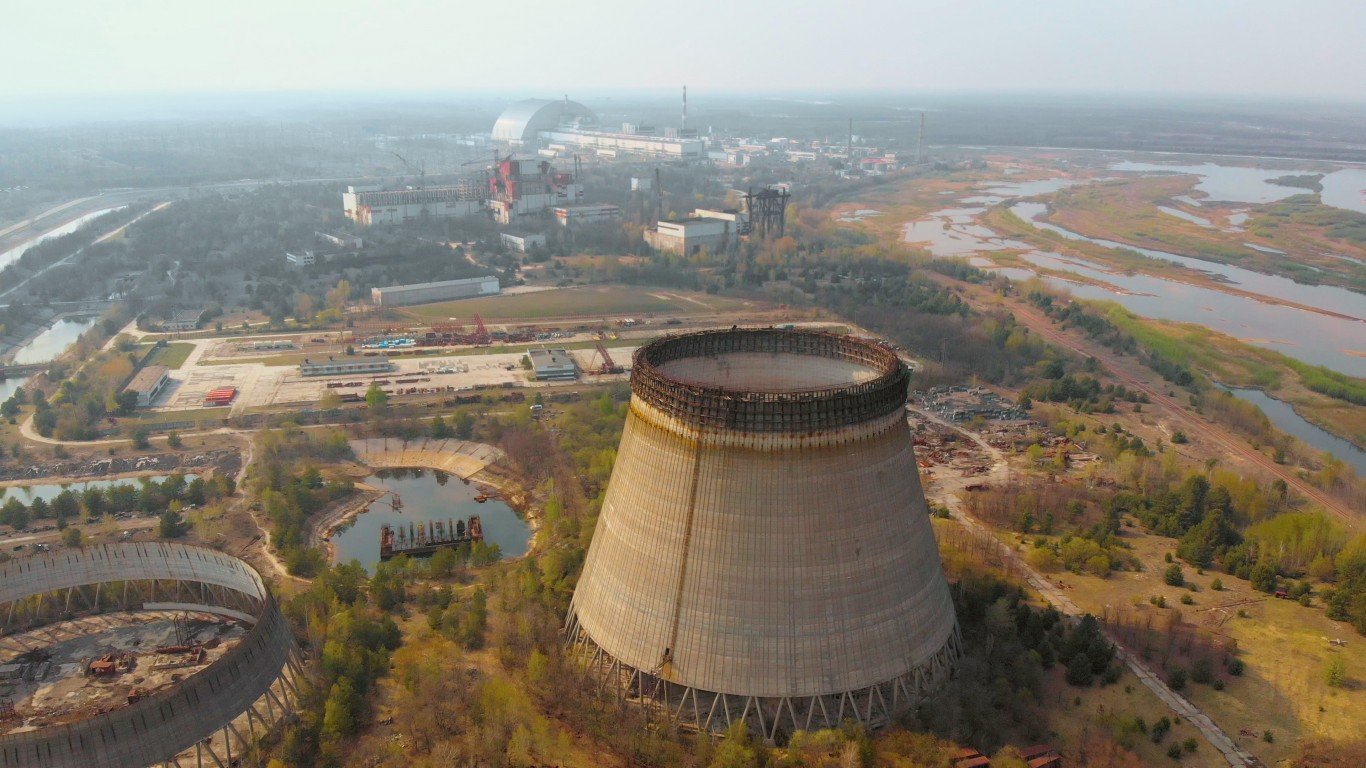

Since the 1950s, heat generated by controlled nuclear processes has been harnessed to power turbines that create electrical power. Today, dozens of countries rely on nuclear power as a source of sustainable energy. Radiological materials have also been used in medicine, for diagnosis and treatment of diseases. Other industries have been using radiological isotopes as well.
The downside is, of course, that irradiated materials like Iodine-131, cesium-137, and cobalt-60, are incredibly dangerous. Unlike in the fantasy worlds of superheros, radiation exposure does not turn people into Spider-Man, the Hulk, or the Fantastic Four but rather causes significant burns and several types of cancer. A person with acute radiation syndrome can die within weeks or months.
Radiation that escapes into the environment, as it did at the Chernobyl nuclear plant accident in April 1986, is harmful for thousands of years into the future.
Furthermore, the toxic waste generated by spent nuclear fuel requires long-term storage and management. Though advances have been made in recycling and maximizing the use of radioactive fuel rods, the U.S. alone generates about 2,000 metric tons of spent nuclear fuel annually that has to go somewhere. For most people, that “somewhere” is “not in my backyard,” which makes finding places to store nuclear waste challenging. (See if the U.S. is also the country with the most nuclear weapons.)
Meanwhile, the number of countries with nuclear power plants is increasing. Belarus and the United Arab Emirates are the most recent members of this global nuclear power club. These countries have agreed to track incidents at their nuclear plants and in other industries that use radiological materials, from medical imaging to materials testing (i.e. industrial radiography).
To find how many radiological incidents and mishaps happened in countries with nuclear power reactors, 24/7 Wall St. reviewed Amsterdam-based LAKA (LAndelijk Kernenergie Archief – National Nuclear Energy Archive) archives, which list all nuclear and radiology-related mishaps since 1990 as reported each year by the International Atomic Energy Agency. From the IAEA’s Power Reactor Information System database, last updated on Dec. 11, 2022, we added the number of nuclear reactors in each country.
These countries have reported at least 921 nuclear and radiological mishaps over the past 32 years, led by the United States, France, and India. Most of these incidents rank low on the seven-level rating system of the International Nuclear Event Scale, or INES, which ranks such mishaps based on numerous factors, including whether the incident overexposed workers or member of the public; whether or not the radiological spill was contained within a facility; and whether the incident signified a breach of adequate safety protocol.
INES level 0 has no safety significance, 1 is considered an anomaly, while levels 2 and 3 are considered incidents. Levels 4 and above are categorized as accidents. Chernobyl and Fukushima were both level 7 major accidents. Radioactive leaks are measured by the number of curies, a unit of radioactivity named after the Polish-French nuclear pioneer Marie Curie. (These two events are the world’s worst nuclear accidents.)
Click here to see major nuclear power mishaps in 35 countries since 1990.
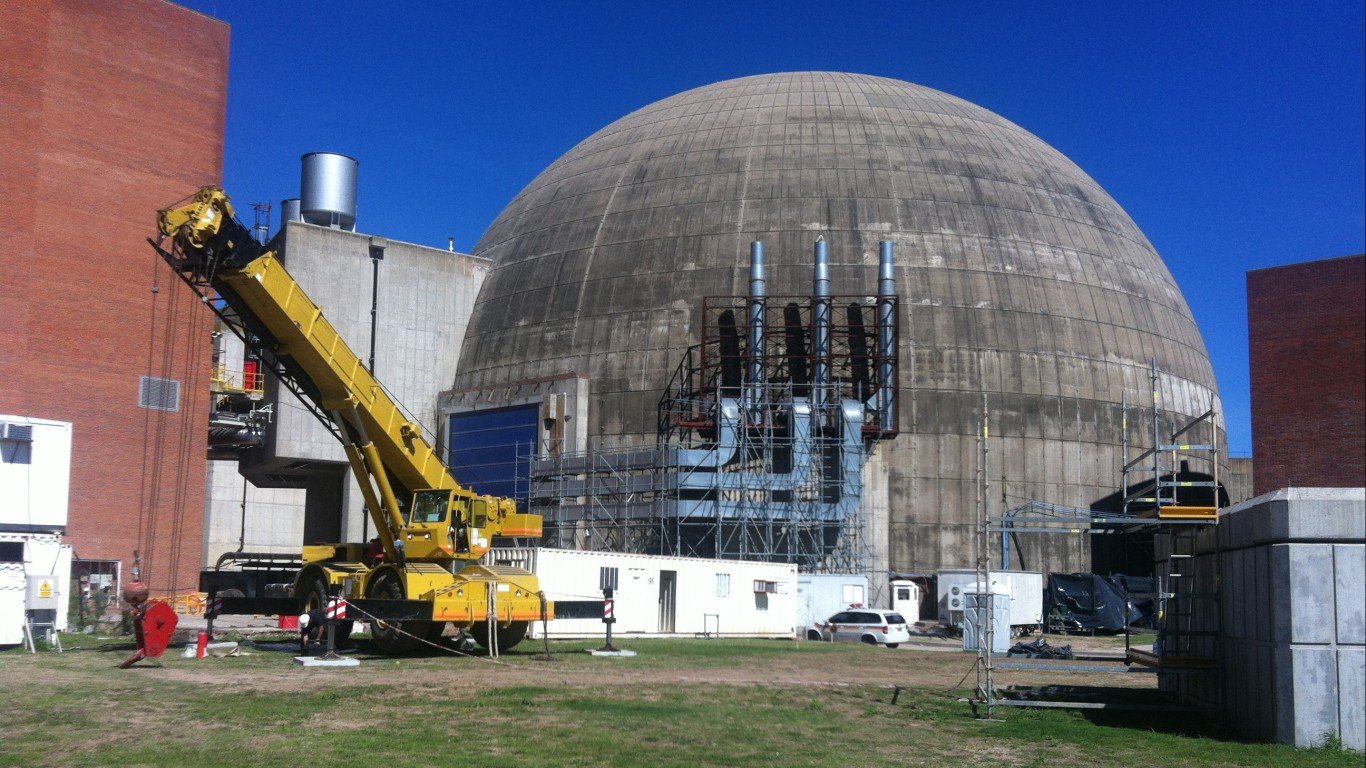
Argentina
> No. of nuclear reactors, Nov 2022: 3
> Pct. of country energy supplied by nuclear, 2021: 7.2%
> No. of nuclear and radiology-related incidents since 1990: 14
This year, Argentina signed an agreement with the state-owned China National Nuclear Corporation to construct Atucha III, an $8.3 billion nuclear power plant that would take eight to nine years to construct and would become the third plant at a complex about 70 miles north of Buenos Aires. Atucha I was the first nuclear power plant in Latin America when it went online in 1968. In 2005, a plant worker was exposed to a dose of radiation that exceeded safety limits – an INES level 2.
[in-text-ad]
Armenia
> No. of nuclear reactors, Nov 2022: 1
> Pct. of country energy supplied by nuclear, 2021: 25.3%
> No. of nuclear and radiology-related incidents since 1990: 7
Four of Armenia’s seven nuclear and radiological-related incidents since 1990 occurred at its only nuclear power plant, which has been active since 1976. Two of these incidents were ranked INES level 2 because although no radiation had been leaked the events were deemed to have taken place because of a poor culture of safety that could have led to a more serious situation.
Two other level 2 events occurred. One in 2003, when customs agents found a radioactive metallic box in a shipment of scrap metal from Iran, and one in 2009, at a checkpoint on the border with Georgia, where a vehicle was found to have high levels of radiation from cesium-137 that was later traced to a service station.
Belarus
> No. of nuclear reactors, Nov 2022: 1
> Pct. of country energy supplied by nuclear, 2021: 14.1%
> No. of nuclear and radiology-related incidents since 1990: 0
Belarus is a newcomer to the world’s nuclear power club. Its first plant, Ostrovets 1, in the northwest part of the country near the border with Lithuania, went online in November 2020 in a Russia-financed project. Since 2011, Belarus has been working to reduce its dependency on Russian natural gas that cost it $2.3 billion in 2020, according to the World Nuclear Association.
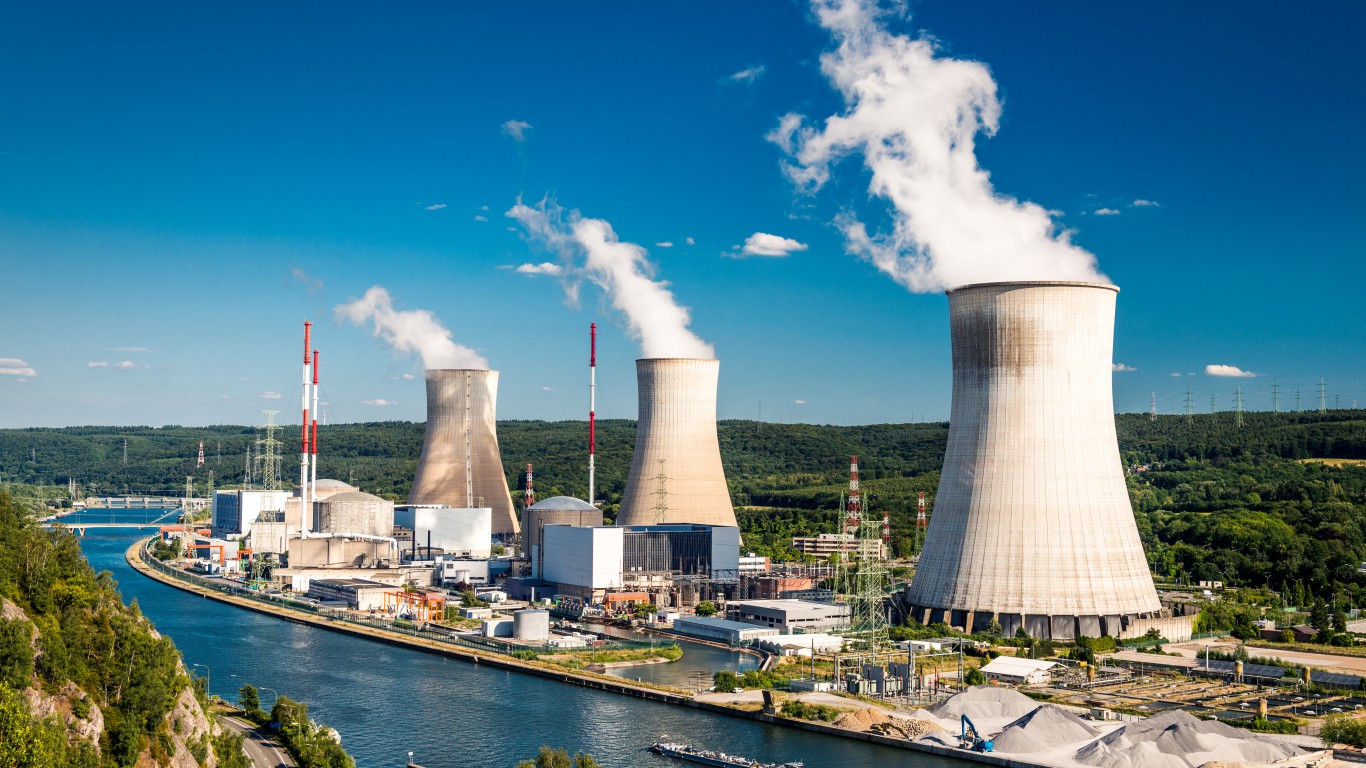
Belgium
> No. of nuclear reactors, Nov 2022: 6
> Pct. of country energy supplied by nuclear, 2021: 50.8%
> No. of nuclear and radiology-related incidents since 1990: 22
Belgium has used nuclear power as a source of electricity since 1974 and had initially planned to close all six of its plants by 2025. In March 2022, the country announced it would allow its two newest plants to remain in operation to 2035. Two radiological incidents in Belgium since 1990 rose to INES levels 3 and 4.
The level 4 event occurred in November 2006, when a worker at a medical device sterilization facility in Fleurus, about 40 miles south of Brussels, was exposed to enough radiation to require hospitalization and extensive treatment. In 2008, a level 3 leak of iodine-131 occurred at a radioactive waste facility in Fleurus. Nobody was exposed in that incident, but the leak was at high enough levels that could increase the risk of cancer.
[in-text-ad-2]
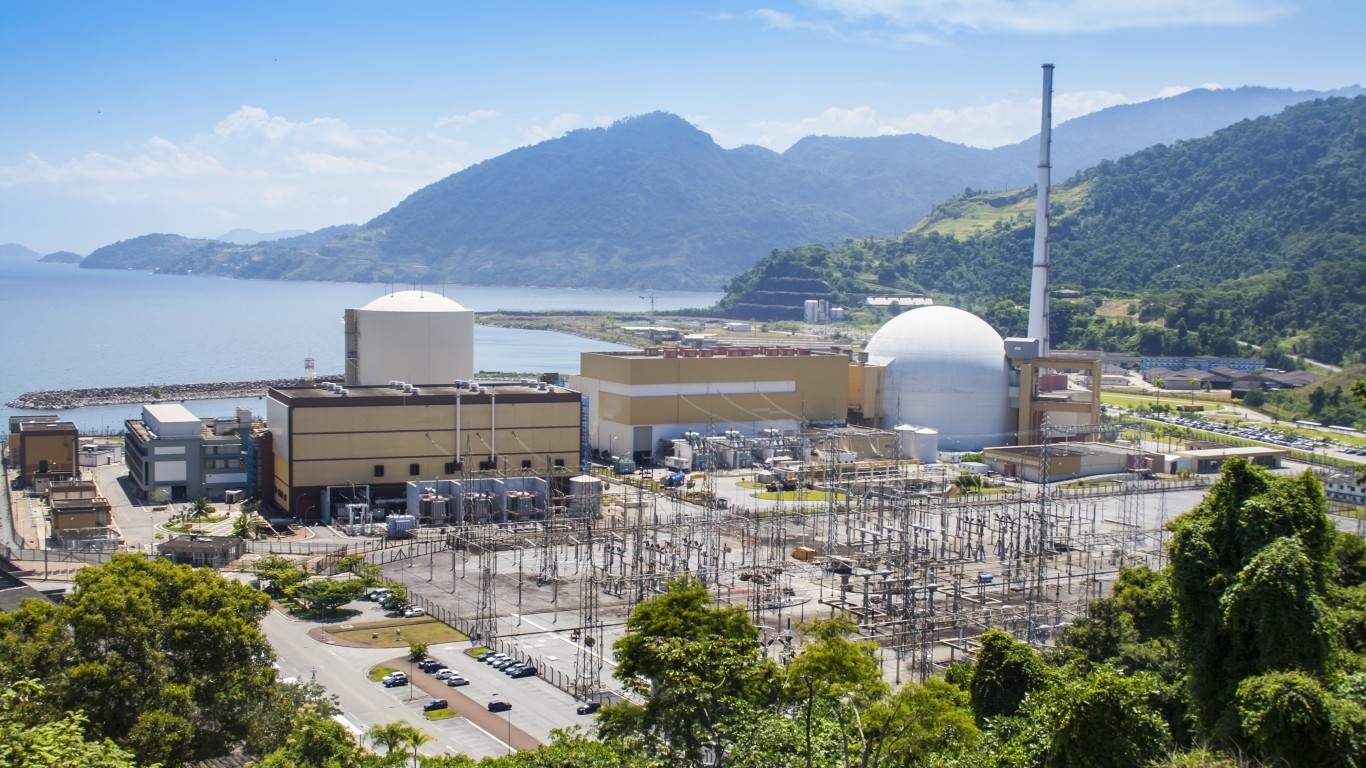
Brazil
> No. of nuclear reactors, Nov 2022: 2
> Pct. of country energy supplied by nuclear, 2021: 2.4%
> No. of nuclear and radiology-related incidents since 1990: 6
Five incidents occurred at Brazil’s only power plant (containing two reactors) near Rio de Janeiro, though none rose above level 2 on the International Nuclear Event Scale. In July 2008, a level 3 INES event occurred when two hospital workers – an American and a Brazilian – were overexposed to radiation while replacing an expended cobalt-60 source in a piece of medical equipment. The exposure was not fatal, but the American suffered radiation blistering on a finger. The Goiánia Accident in the Brazilian state of Goiás in 1987 was a level 5 event that killed four people and poisoned 249 others. The source was stolen medical radiology equipment.
Bulgaria
> No. of nuclear reactors, Nov 2022: 2
> Pct. of country energy supplied by nuclear, 2021: 34.6%
> No. of nuclear and radiology-related incidents since 1990: 26
Most of Bulgaria’s nuclear and radiological-related mishaps since 1990 have been low-level events of 0 to 1 on the International Nuclear Event Scale. And all but three of these events happened at the country’s sole nuclear power plant (containing two reactors) near the town of Kozloduy, about 110 miles north of the capital Sofia. The most dangerous incident, an INES level 4 event, occurred in the southern town of Stamboliyski at a revitalized agricultural-focused gamma-irradiation testing facility in June 2011. Five workers had accidentally exposed themselves to dangerous levels of cobalt-60 radiation.
[in-text-ad]
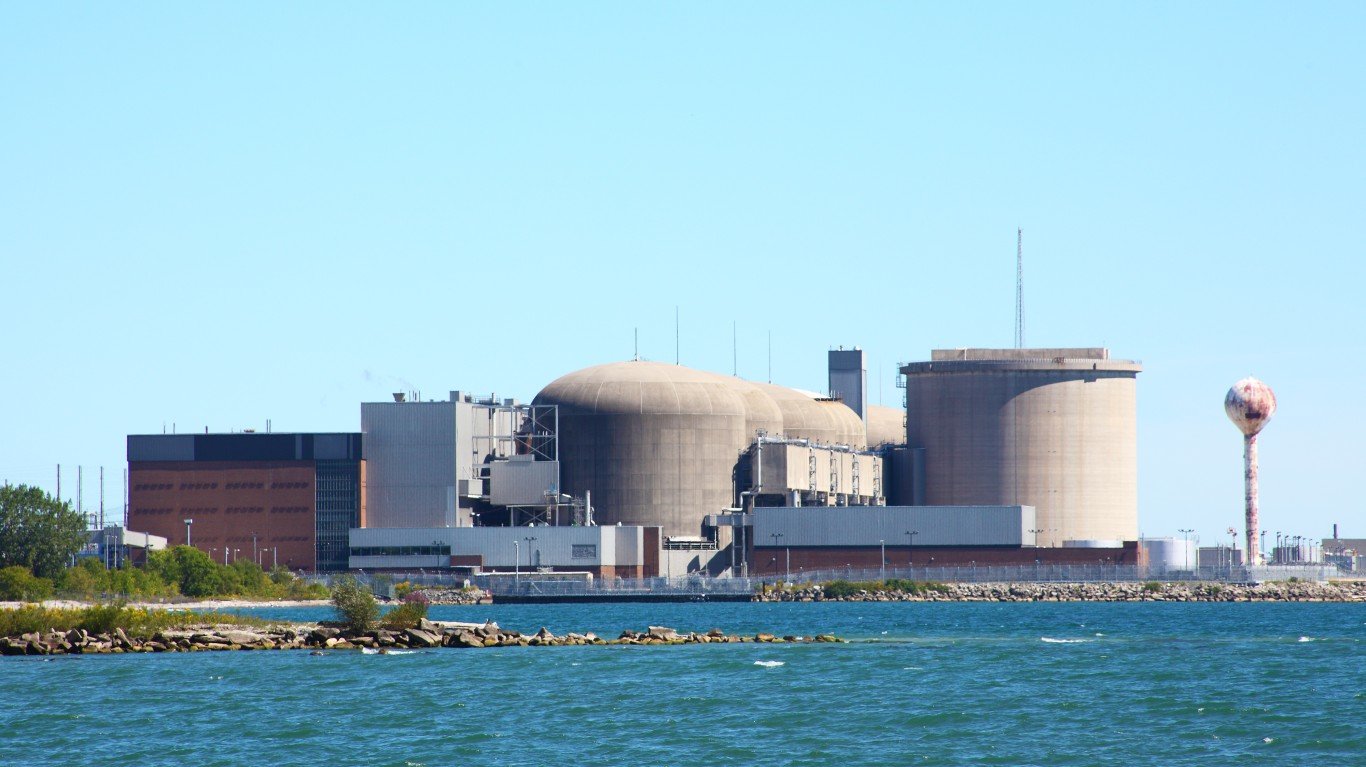
Canada
> No. of nuclear reactors, Nov 2022: 19
> Pct. of country energy supplied by nuclear, 2021: 14.3%
> No. of nuclear and radiology-related incidents since 1990: 22
Canada has not had a nuclear-related incident above level 2 on the International Nuclear Event Scale since 1990. Five of these 22 reports are “below scale,” meaning they were rated zero on the INES, including two reports following earthquakes that occurred in 2010 and 2013. Canada’s two worst nuclear plant accidents occurred in the 1950s, both at a plant in Chalk River, Ontario. The first in 1952 released radioactivity into the local environment, and the second event occurred six years later, when a radiation leak at the facility had to be contained.
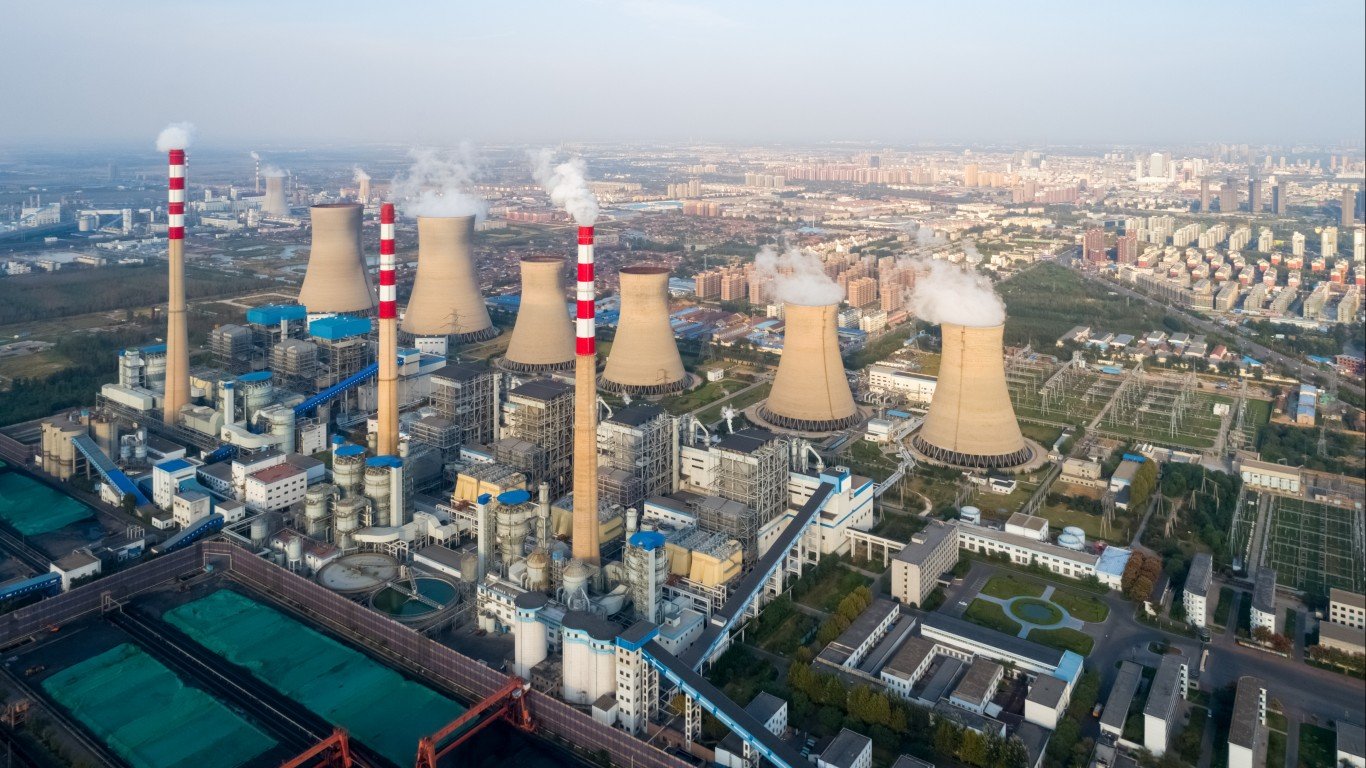
China
> No. of nuclear reactors, Nov 2022: 55 (includes 3 reactors in Taiwan)
> Pct. of country energy supplied by nuclear, 2021: 5.0%
> No. of nuclear and radiology-related incidents since 1990: 8
China has reported eight nuclear and radiological-related incidents since 1990, including three that reached level 3 on the INES. The first of these occurred in January 1992 when a lost piece of cobalt-60 in Shanxi province was found by a man who later died along with his brother and father from acute radiation poisoning. The second level 3 event took place at an electrical wire factory in Tianjin, when two workers were injured by exposure to a high frequency, high voltage electron accelerator. The third event, in 1996, injured a worker at a polyethylene project in Jihua after he was accidentally exposed to iridium-192.
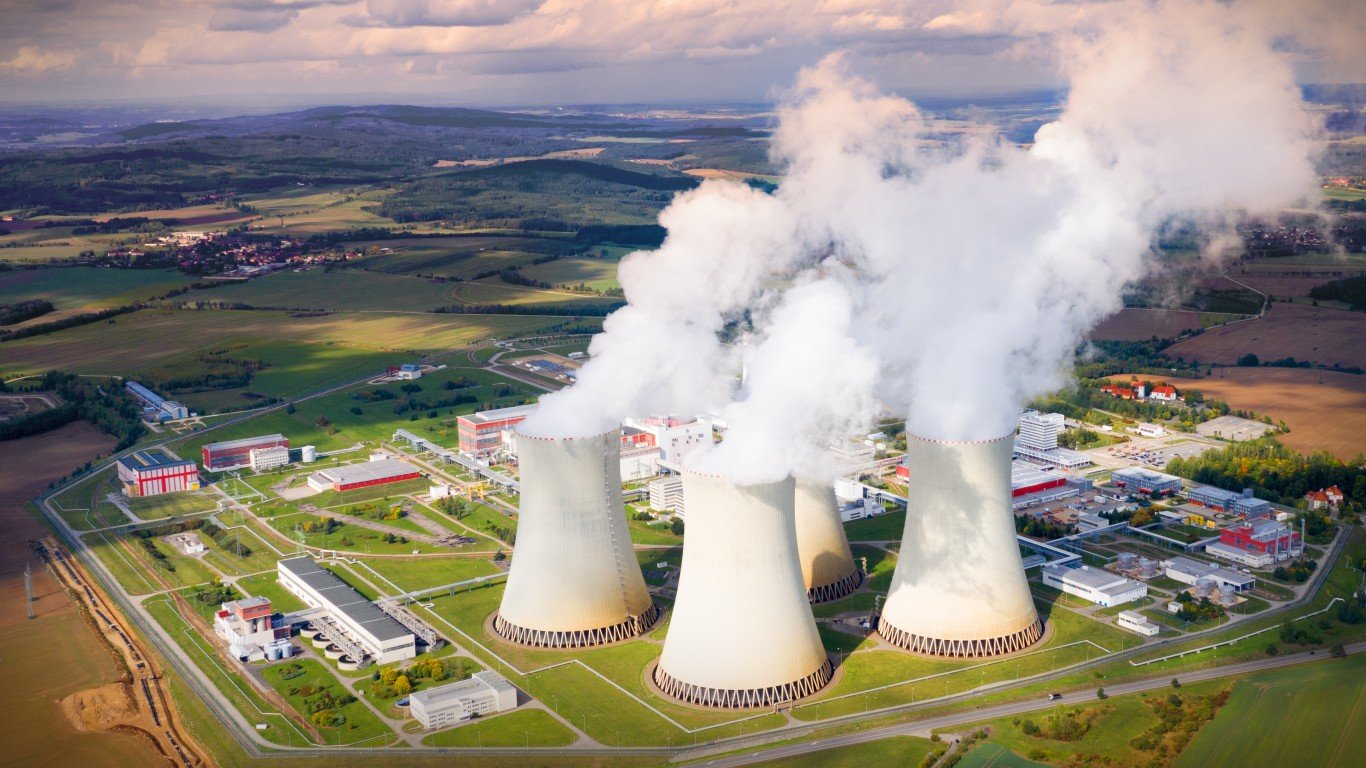
Czech Republic
> No. of nuclear reactors, Nov 2022: 6
> Pct. of country energy supplied by nuclear, 2021: 36.6%
> No. of nuclear and radiology-related incidents since 1990: 22
Out of 22 nuclear and radiological-related incidents in the Czech Republic since 1990, three measured level 3 on the INES, the first dating back to April 1990 happened at a nuclear power plant near the southern municipality of Dukovany, when a short circuit caused an emergency shutdown of one of the four reactors at the facility. The incident was rated high despite no injuries because it indicated a significant loss of defense against a meltdown.
The second level 3 event occurred when a citizen was exposed to radium-226 he found at a playground. The material was believed to come from medical equipment. In 2012, the third level 3 event occurred when a worker was overexposed to radiation at a lead foundry in the northern town of Hrob.
[in-text-ad-2]
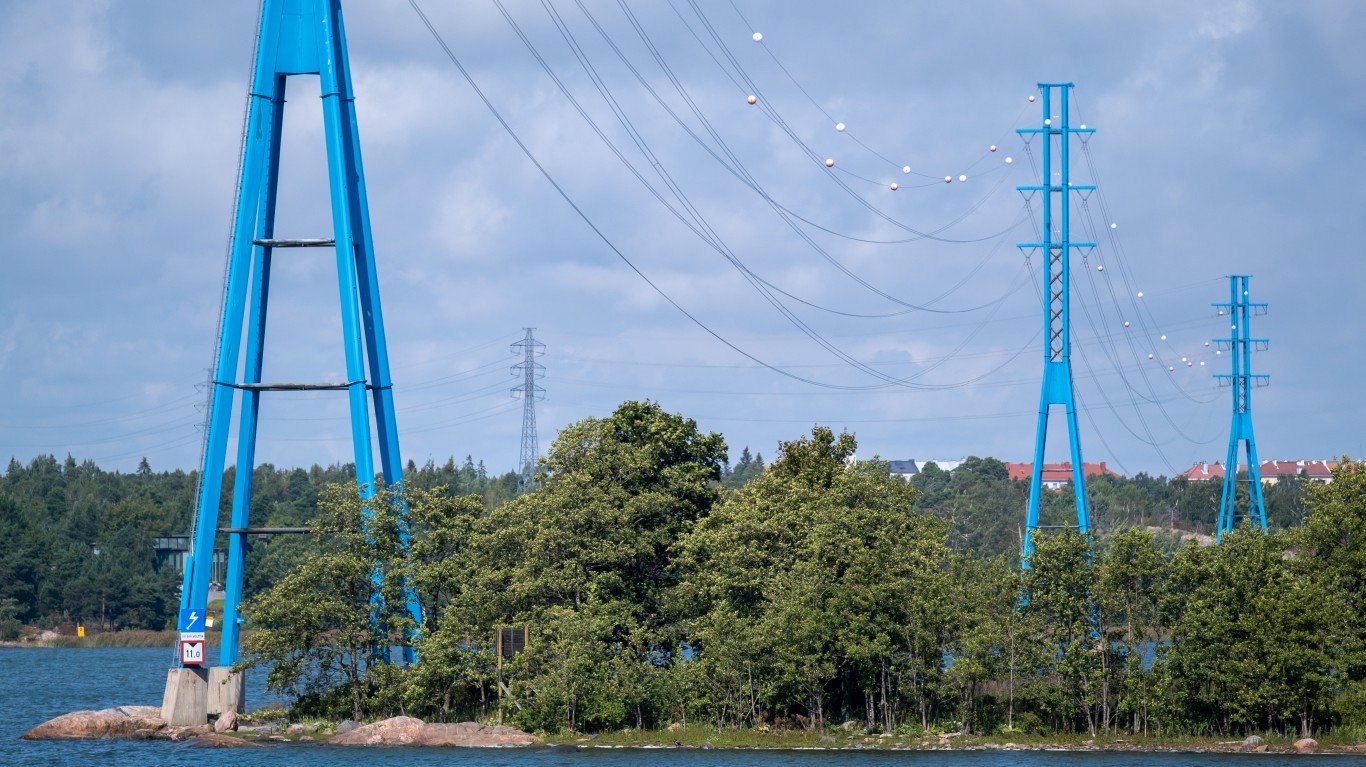
Finland
> No. of nuclear reactors, Nov 2022: 5
> Pct. of country energy supplied by nuclear, 2021: 32.8%
> No. of nuclear and radiology-related incidents since 1990: 19
Out of the 19 nuclear and radiological-related mishaps that have occurred in Finland since 1990, five rose to INES level 2, meaning each incident involved at least one worker overexposed to radiation and/or there was a measurable degradation of defense mechanisms designed to prevent accidents. The most recent INES level 2 event in Finland occurred at a veterinary clinic in the western city of Tampere when a worker was exposed to high levels of iodine-131 that was used to treat hyperthyroidism in cats. The transmission came from remnants of the isotope on the fur of one of the felines.
France
> No. of nuclear reactors, Nov 2022: 56
> Pct. of country energy supplied by nuclear, 2021: 69.0%
> No. of nuclear and radiology-related incidents since 1990: 107
After the United States and China, France ranks third in the world in nuclear power electric production. Relative to its population and geographic size, France is the most nuclear power dependent country in the world and it ranks second on this list, after the United States, in the number of reported nuclear and radiological-related incidents. Though none of these events led to radiological leaks, two incidents injured or killed reactor workers. One incident, in September 2011, was a furnace blast at the Marcoule Nuclear Site. In the other, in November 1992, three workers entered an active nuclear particle accelerator without protective gear in Forbach.
[in-text-ad]
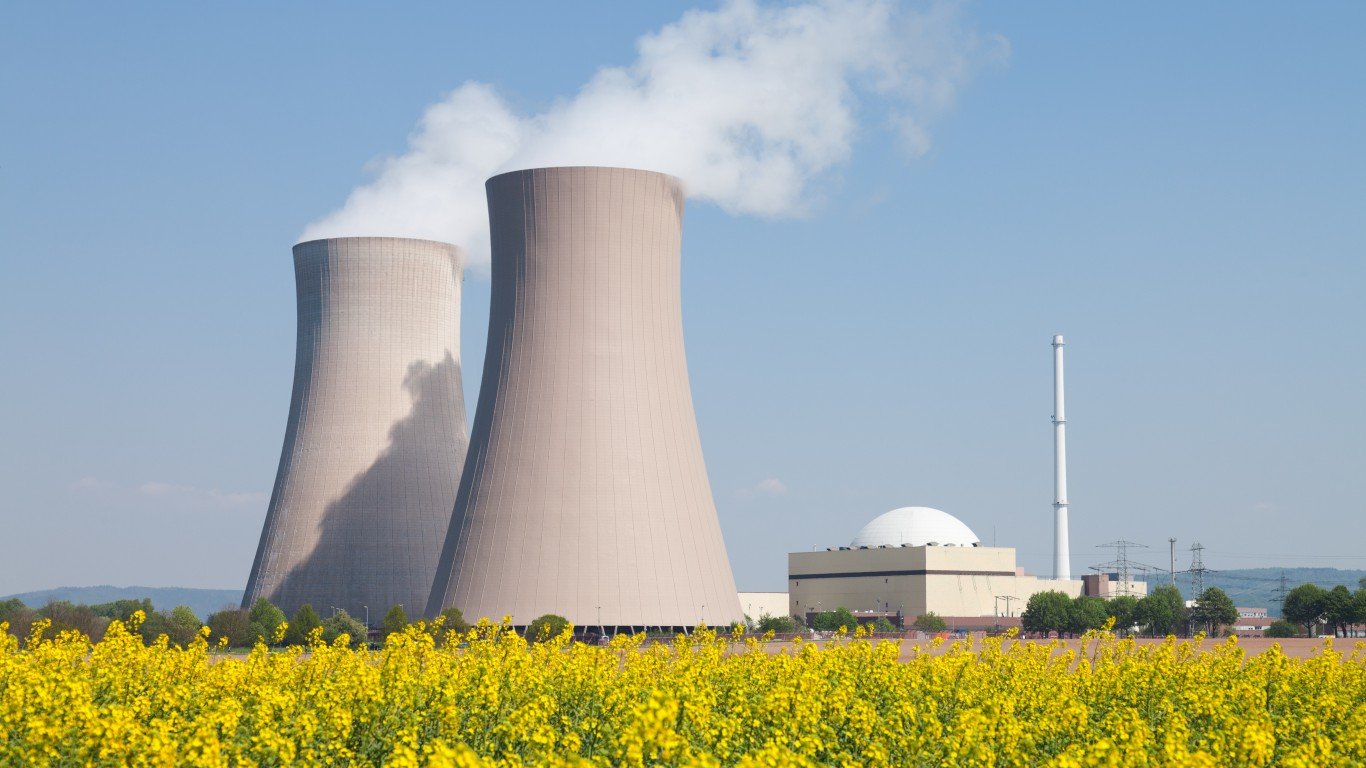
Germany
> No. of nuclear reactors, Nov 2022: 3
> Pct. of country energy supplied by nuclear, 2021: 11.9%
> No. of nuclear and radiology-related incidents since 1990: 20
Germany is in the process of phasing-out its nuclear power plants, but Russia’s war on Ukraine and its impact on the European energy market has forced a delay in the shutdown of the country’s last three reactors until April 2023. One of the 21 radiological mishaps reported in Germany since 1990 rose to level 3 on the INES when a worker at a company that tests non-destructive materials in Lower Saxony was exposed to high levels of radiation resulting in significant injury.
Hungary
> No. of nuclear reactors, Nov 2022: 4
> Pct. of country energy supplied by nuclear, 2021: 46.8%
> No. of nuclear and radiology-related incidents since 1990: 25
All but one of Hungary’s nuclear and radiological-related mishaps since 1990 were rated below level 3 on the INES. The most serious incident occurred at Hungary’s nuclear power plant near the southern town of Paks when fuel rods collapsed in one of the plant’s reactors leading to a leak of radioactive gasses. The reactor remained offline for 18 months for repairs.
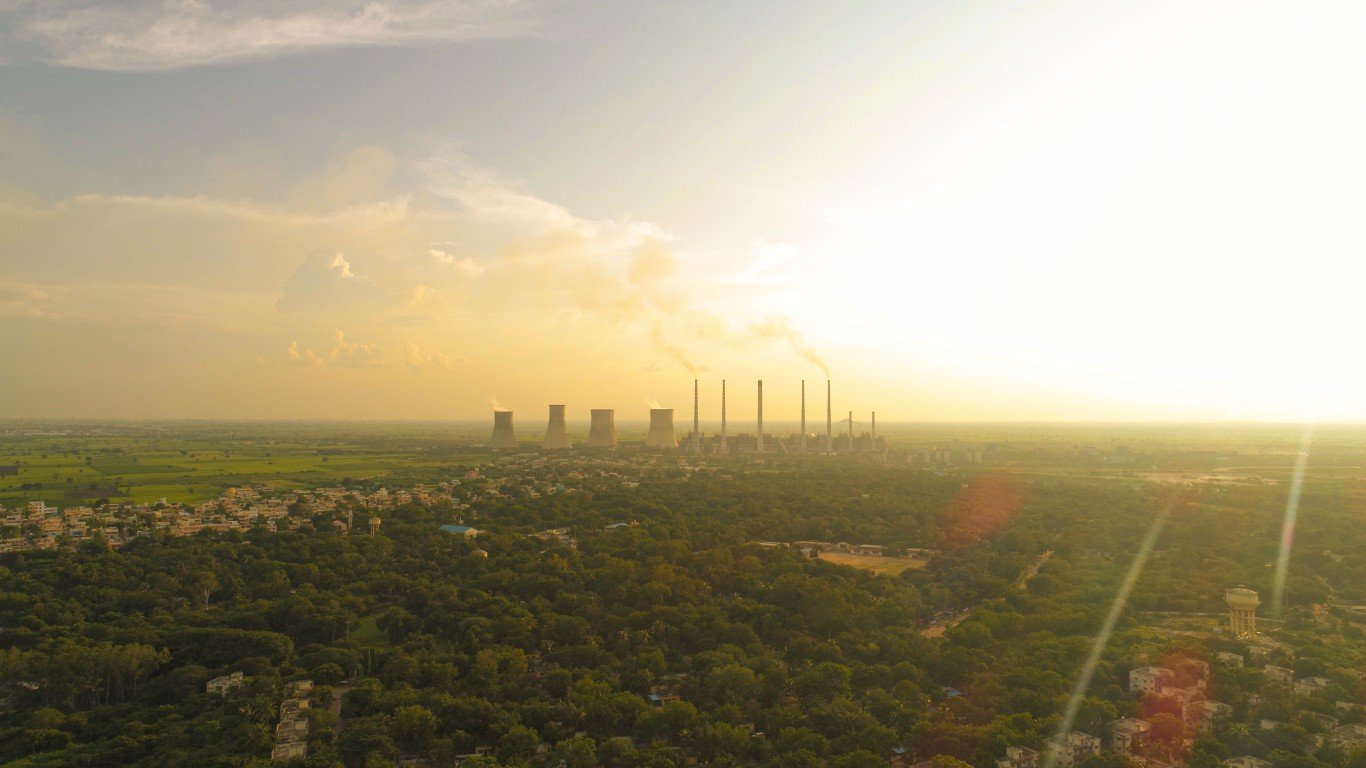
India
> No. of nuclear reactors, Nov 2022: 22 (+1 suspended reactor)
> Pct. of country energy supplied by nuclear, 2021: 3.2%
> No. of nuclear and radiology-related incidents since 1990: 98
India ranks third in the number of reported nuclear and radiological-related incidents since 1990, after the United States and France, despite having significantly fewer nuclear power reactors. All but two events have ranked lower than INES level 3, but one of them measured level 4.
In that event, on April 7, 2010, a scrap-metal dealer came to a hospital with radiation-induced symptoms. Upon investigation, it was discovered that the source of the radiation was discarded gamma cells (used for a number of industrial and medical purposes) containing cobalt-60 at three scrap metal shops in the Mayapuri district of West Delhi, requiring an extensive cleanup operation. A level 3 event occurred in 1993 when a turbine fire at a nuclear power plant in Narora, Uttar Pradesh state, set off an emergency cooling system that prevented a meltdown.
[in-text-ad-2]
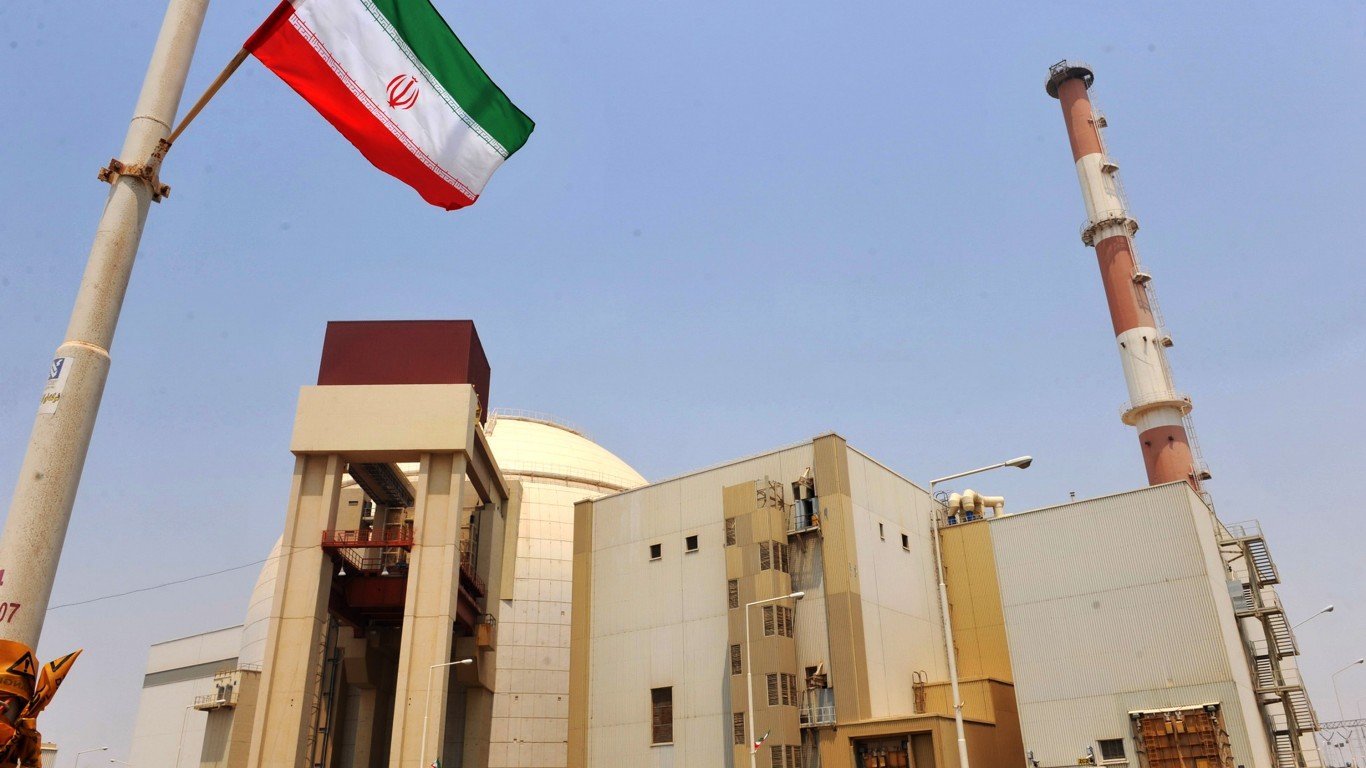
Iran
> No. of nuclear reactors, Nov 2022: 1
> Pct. of country energy supplied by nuclear, 2021: 0.1%
> No. of nuclear and radiology-related incidents since 1990: 7
Iran is a relatively recent member of the nuclear power club, putting its first plant online in 2011. A second $2 billion plant is under construction in Khuzestan province. None of its seven incident reports since 1990 involve its only nuclear power plant located at the southern port city of Bushehr. Two were classified as INES level 3. One in September 2005 involved overexposure of two workers to gamma radiation at an oil refinery project, and the other, in December 2018, involved overexposure of two workers while performing industrial radiography in Khorasane Razavi province.
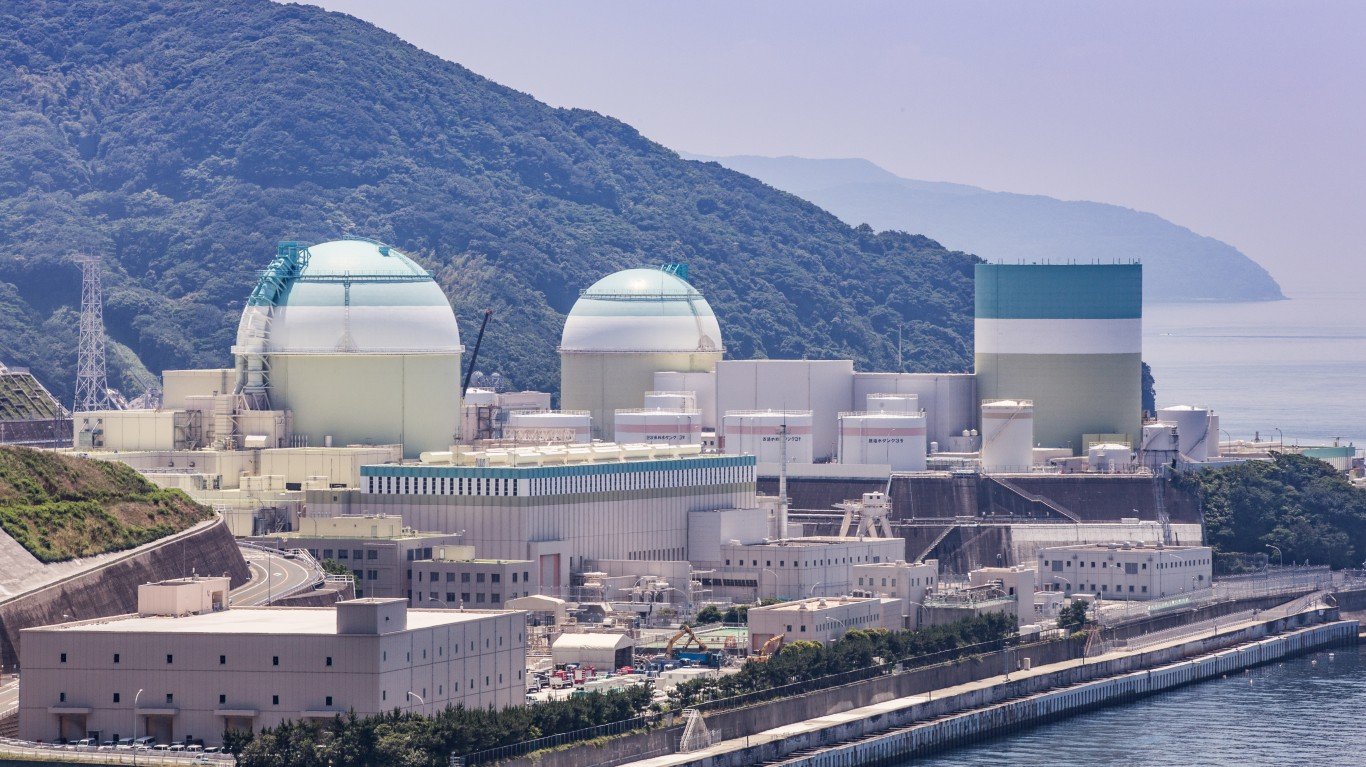
Japan
> No. of nuclear reactors, Nov 2022: 17 (+16 suspended reactor)
> Pct. of country energy supplied by nuclear, 2021: 7.2%
> No. of nuclear and radiology-related incidents since 1990: 45
Japan’s Fukushima nuclear accident of March 2011, instigated by the Tōhoku earthquake and tsunami, is the largest nuclear disaster since the April 1986 Chernobyl accident in Soviet Ukraine. Both accidents reached INES level 7, the highest possible rating.
The Fukushima accident led to numerous other incidents over the following years involving the management and control of contaminated water. The death toll from the Fukushima accident (both from direct exposure and ensuing health risks) was much lower than Chernobyl’s. The reason for this has been attributed to improved reactor design and safety protocol and Japan’s early response that involved the immediate evacuation of 160,000 people.
[in-text-ad]
Korea, Republic Of
> No. of nuclear reactors, Nov 2022: 25
> Pct. of country energy supplied by nuclear, 2021: 28.0%
> No. of nuclear and radiology-related incidents since 1990: 52
Forty-five of South Korea’s 52 nuclear and radiation-related incidents since 1990 registered a zero on the International Nuclear and Radiological Event Scale, meaning the incidents had no safety significance. Out of the seven incidents that had safety significance, only one rose to level 3, meaning at least one worker was exposed to a non-lethal injury (i.e. radiation burns) from a leak contained to the facility, and the leak may have had the potential to be a more dangerous incident.
That mishap occurred in March 2009 when a radiography worker at a pipe-welding workshop in the southern city of Jinju was exposed to enough iridium-192 to be injured by severe burns on his fingers from an excess full-body dose of radiation.
Mexico
> No. of nuclear reactors, Nov 2022: 2
> Pct. of country energy supplied by nuclear, 2021: 5.3%
> No. of nuclear and radiology-related incidents since 1990: 34
Mexico became a member of the global nuclear power club when the first of its two reactors at a plant on the coast of eastern Veracruz state went online in 1990. A second reactor was activated at the facility five years later. Since then, 14 of Mexico’s reported 34 nuclear and radiation-related incidents have originated at the Laguna Verde Nuclear Power Station, the most recent took place in 2009, when a door to one of the reactor units was left unlocked. Though nobody was injured, the safety breach earned the incident a level 2 on the International Nuclear and Radiological Event Scale.
The most significant radiation-related incident in Mexico occurred in December 2003, when a truck containing radioactive waste from a hospital was stolen and radioactive cobalt-60 was dumped in a field in central Mexico.
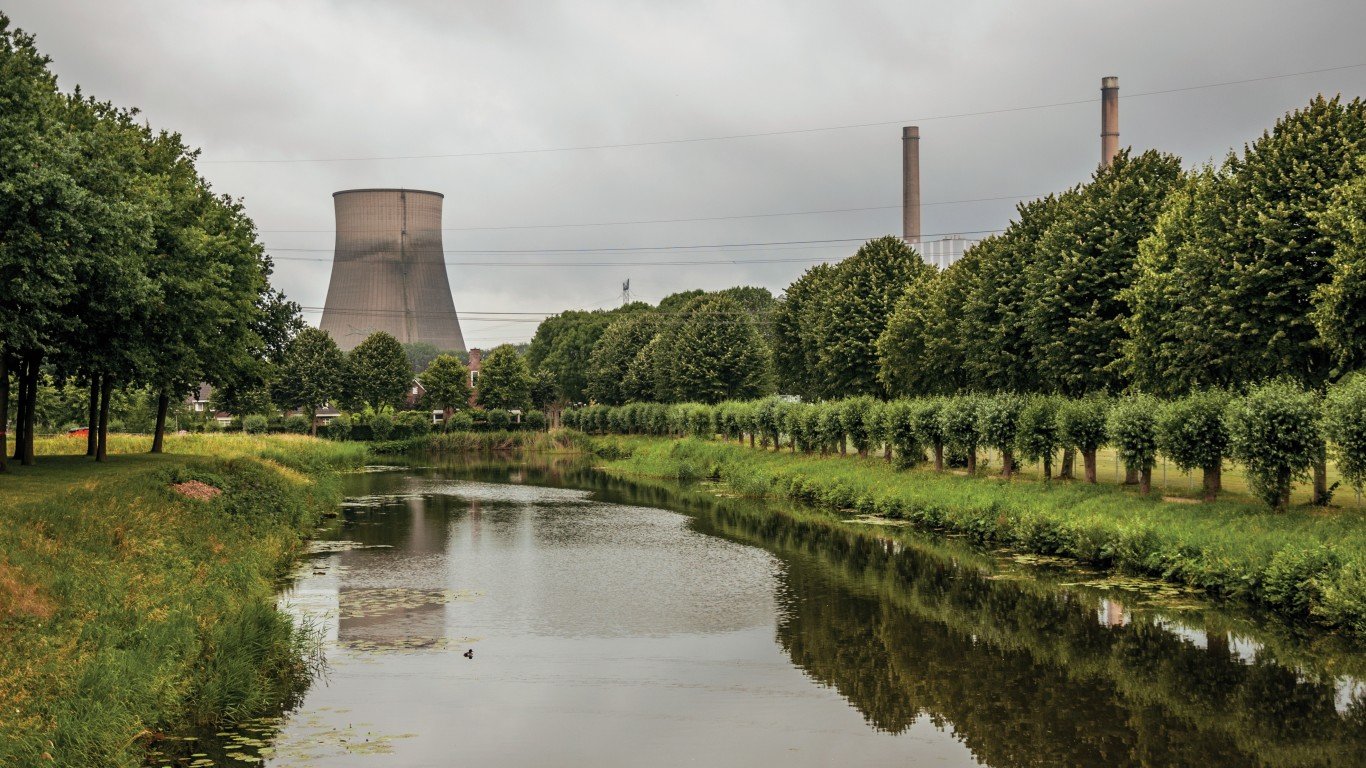
Netherlands
> No. of nuclear reactors, Nov 2022: 1
> Pct. of country energy supplied by nuclear, 2021: 3.1%
> No. of nuclear and radiology-related incidents since 1990: 20
Since 1996, the Netherlands has reported one radiation-related incident at its sole nuclear power reactor near the town of Borssele in December of that year: a minor event of mispositioned valves that suggests a breach in safety protocol. Eleven of Holland’s 20 reported radiation-related incidents involved discoveries of radioactive materials in discarded scrap at or near the country’s massive container ports. Scrap metal is a common source of potentially dangerous radiological materials.
[in-text-ad-2]
Pakistan
> No. of nuclear reactors, Nov 2022: 6
> Pct. of country energy supplied by nuclear, 2021: 10.6%
> No. of nuclear and radiology-related incidents since 1990: 11
Seven of Pakistan’s reported 11 radiation mishaps occurred at its nuclear power plant facilities. But the most alarming incident, which measured INES level 3, took place in October 2012, when three workers were exposed to dangerous levels of iridium-192 while conducting industrial radiography at a company near Lahore.
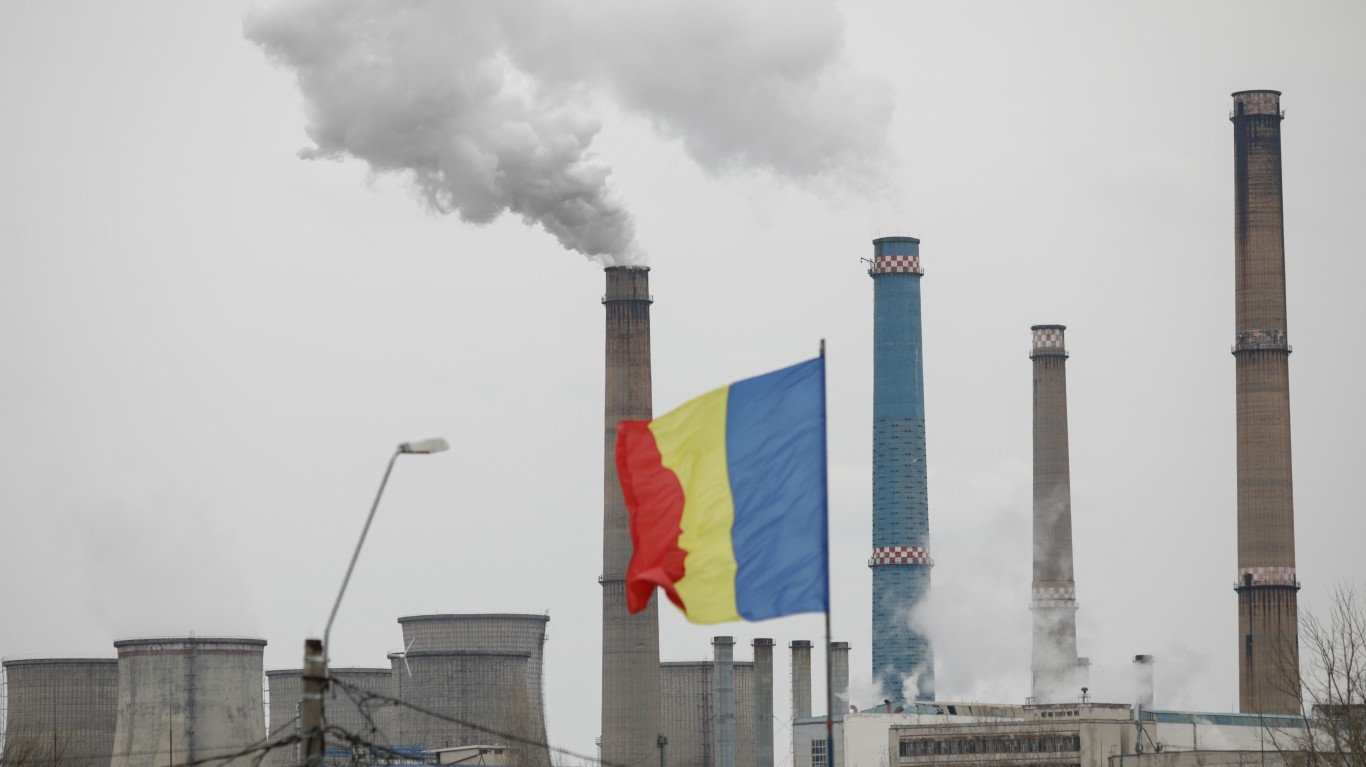
Romania
> No. of nuclear reactors, Nov 2022: 2
> Pct. of country energy supplied by nuclear, 2021: 18.5%
> No. of nuclear and radiology-related incidents since 1990: 7
Romania began using nuclear power for electrical production in 1996, and since then the plant near the southern town of Cernavodă reported two incidents: the loss of a chunk of cesium-137 from a retired piece of equipment in November 2001 and a ruptured freon storage tank that had no significant impact. In July 2006, a Romania-bound package from Brussels containing iodine-131 disappeared from an Austrian Airlines facility in Austria. It was never recovered.
[in-text-ad]
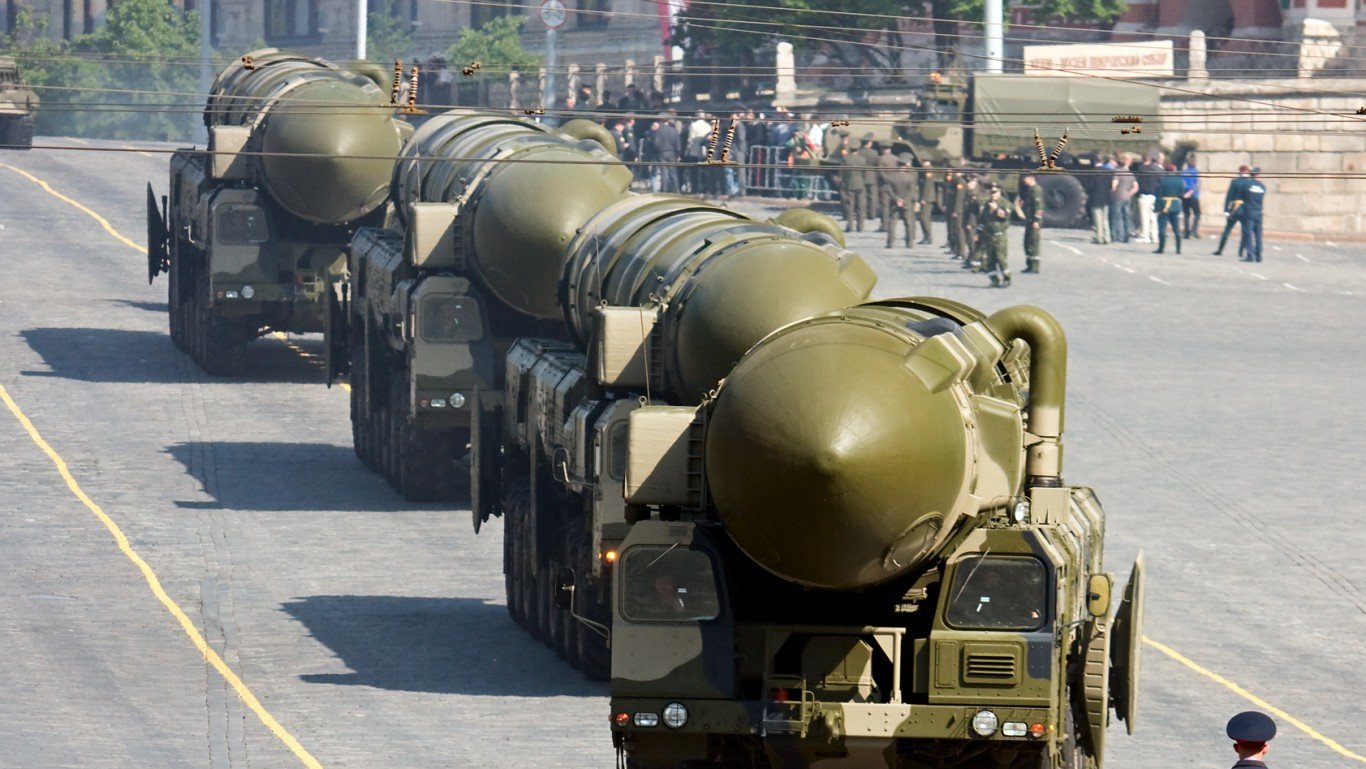
Russian Federation
> No. of nuclear reactors, Nov 2022: 37
> Pct. of country energy supplied by nuclear, 2021: 20.0%
> No. of nuclear and radiology-related incidents since 1990: 38
Since 1990, Russia has reported four nuclear and radiation-related incidents that measured INES level 3. Two of them occurred on Feb. 2, 1993, when a tornado damaged transmission lines that triggered an emergency protection system at two of the four reactors at the Kola Nuclear Power Plant near the northwestern town of Polyarnye Zori, 765 miles north of St. Petersburg. The higher INES rating was earned in part due to deficiencies in safety protocols.
Two other level 3 events occurred. One at the nuclear plant in eastern Siberia near the town in Bilibino on July 10, 1991, and the other at a plant about 60 miles from the western city of Smolensk just days later, on July 22, 1991.
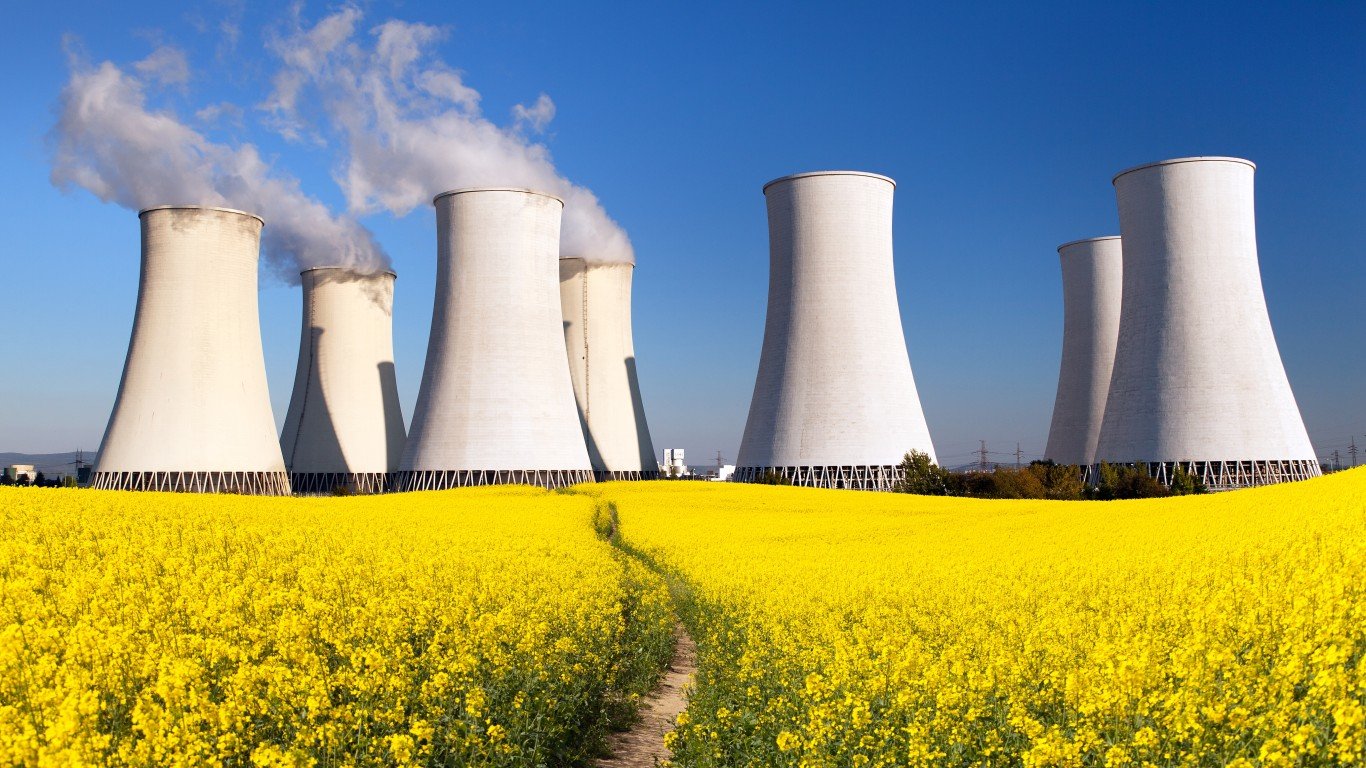
Slovakia
> No. of nuclear reactors, Nov 2022: 4
> Pct. of country energy supplied by nuclear, 2021: 52.3%
> No. of nuclear and radiology-related incidents since 1990: 14
Slovakia’s most significant reported incident occurred in May 1991, a little less than two years before Czechoslovakia officially split into two sovereign states. That INES level 3 incident occurred at the country’s sole nuclear power plant near the western village of Jaslovské Bohunice, when radioactive water spilled into a reactor hall from a storage tank due to human error.
Slovenia
> No. of nuclear reactors, Nov 2022: 1
> Pct. of country energy supplied by nuclear, 2021: 36.9%
> No. of nuclear and radiology-related incidents since 1990: 25
Most of Slovenia’s reported radiation-related incidents since 1990 have been rated lower than INES level 2. Neither of the two level 2 events occurred at the country’s nuclear power plant near the eastern town of Krško. The first incident occurred in July 2003, when Italian border control discovered cesium-137 in a shipment of Slovenian scrap metal attempting to cross the border at Vrtojba. The second incident took place when four workers were overexposed to radiation while conducting industrial radiography at a thermal power station construction site in the northern town of Šoštanj.
[in-text-ad-2]
South Africa
> No. of nuclear reactors, Nov 2022: 2
> Pct. of country energy supplied by nuclear, 2021: 6.0%
> No. of nuclear and radiology-related incidents since 1990: 8
South Africa put its first and only nuclear power plant online in 1984. Since 1990, the Koeberg plant near Cape Town, the only nuclear power plant on the African continent, had reported three incidents, all of them reaching INES level 2, with the most recent occurring on May 12, 2005, when a cooling system failed due to improper reassembly of certain components. Seven of South Africa’s eight reported nuclear and radiological-related incidents were rated level 2 on the INES.
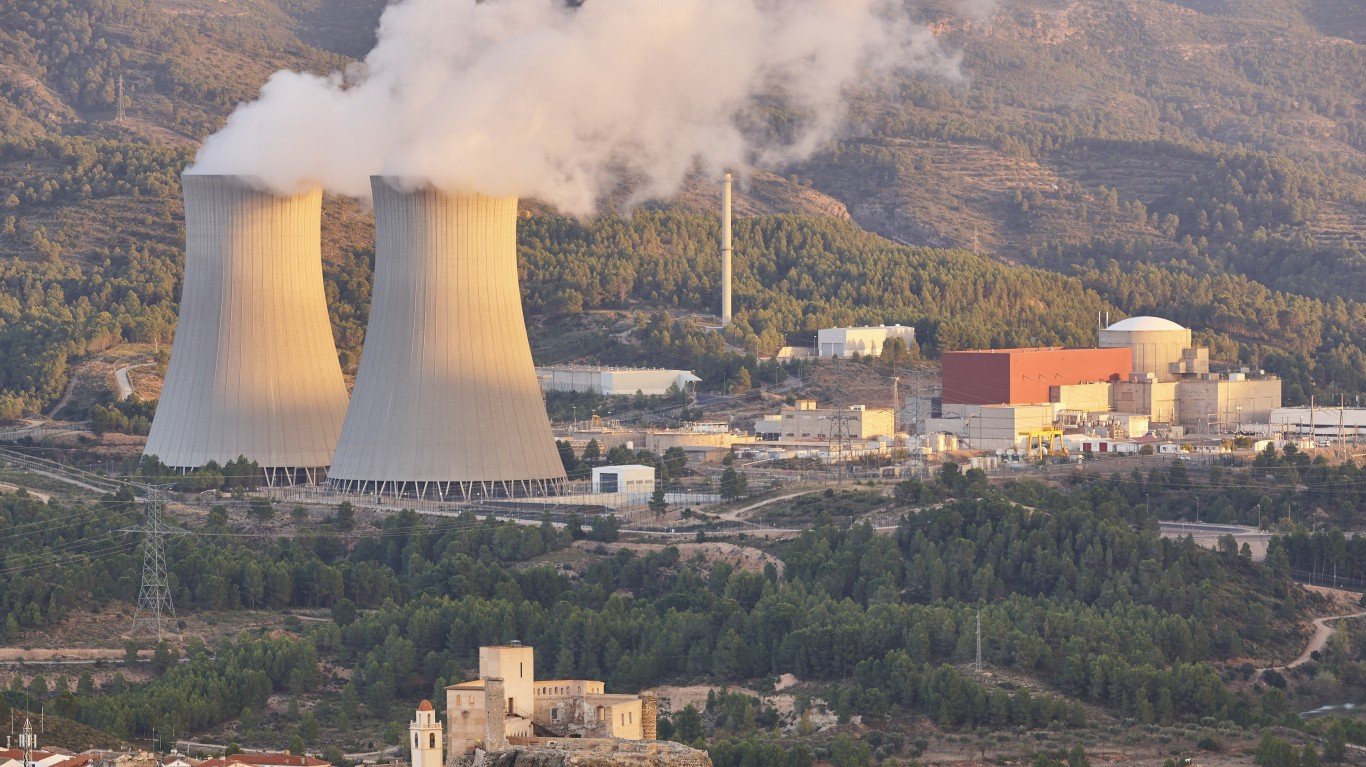
Spain
> No. of nuclear reactors, Nov 2022: 7
> Pct. of country energy supplied by nuclear, 2021: 20.8%
> No. of nuclear and radiology-related incidents since 1990: 19
Spain has had two radiological incidents that reached INES level 3 since 1990. The first one occurred in November 2007, when a radiographer was overexposed while working for an industrial testing company near the northern city of Bilbao. The second incident took place in August 2008 in the port city of Tarragon, which also involved the overexposure of a worker conducting industrial radiography. A dozen incidents have been reported at Spain’s nuclear power plants, nine rated at level 1 or 0 on the INES.
[in-text-ad]

Sweden
> No. of nuclear reactors, Nov 2022: 6
> Pct. of country energy supplied by nuclear, 2021: 30.8%
> No. of nuclear and radiology-related incidents since 1990: 59
The most significant reported radiological-related incident in Sweden occurred on Jan. 2, 2002, when a package containing iridium-192 produced by Swedish nuclear services provider Studsvik was discovered after it arrived at the U.S. airport near New Orleans. The radioactive material had broken free from its container during transport. The incident was reported back to the company, which was ordered to carry out corrective actions. Incidents at the country’s nuclear power plants have been rated at level 2 or lower.
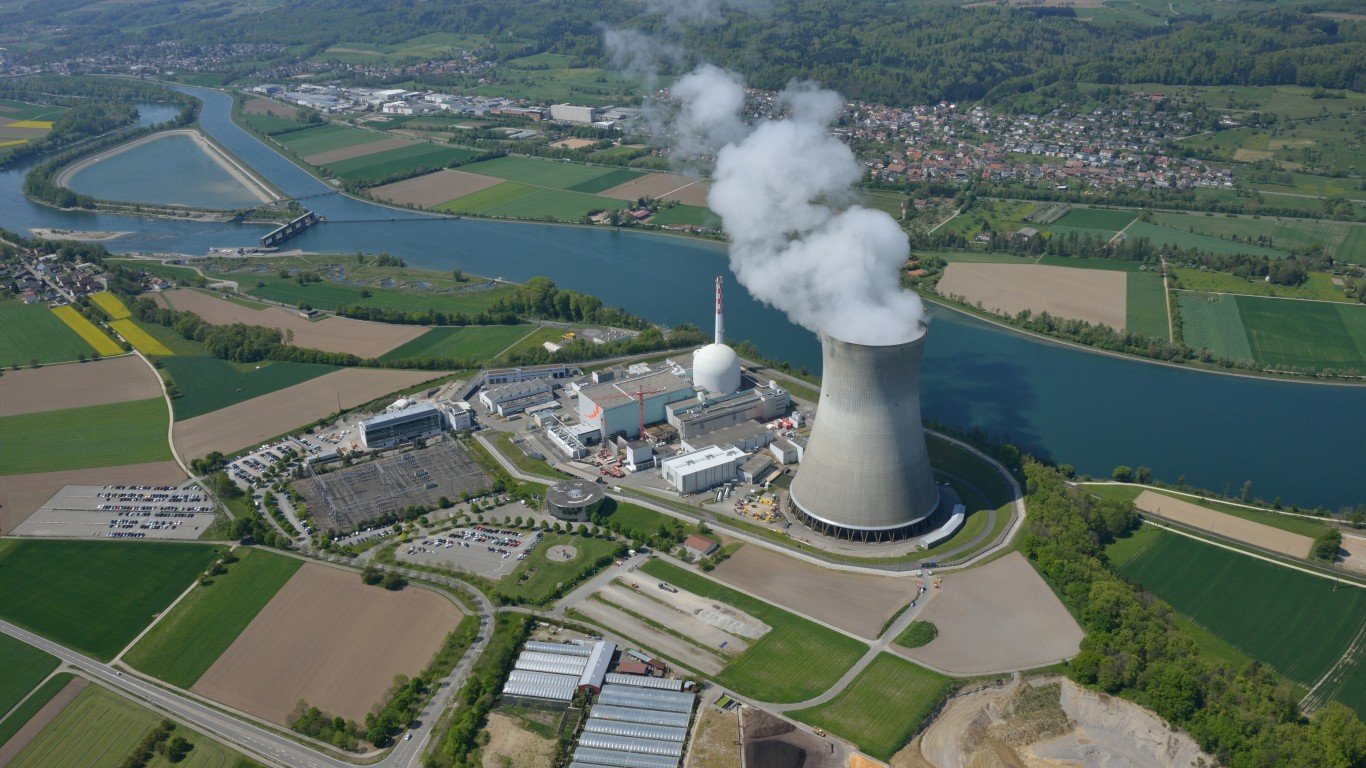
Switzerland
> No. of nuclear reactors, Nov 2022: 4
> Pct. of country energy supplied by nuclear, 2021: 28.8%
> No. of nuclear and radiology-related incidents since 1990: 14
Ten of Switzerland’s reported incidents since 1990 have occurred at the country’s nuclear power plants, all rated below INES level 3. The most significant incident, rated at level 3, occurred in July 2014, when a service technician repairing a hospital x-ray machine was overexposed for about five minutes when he accidentally stepped on a foot pedal that activated the machine while a lead safety shield was disengaged.
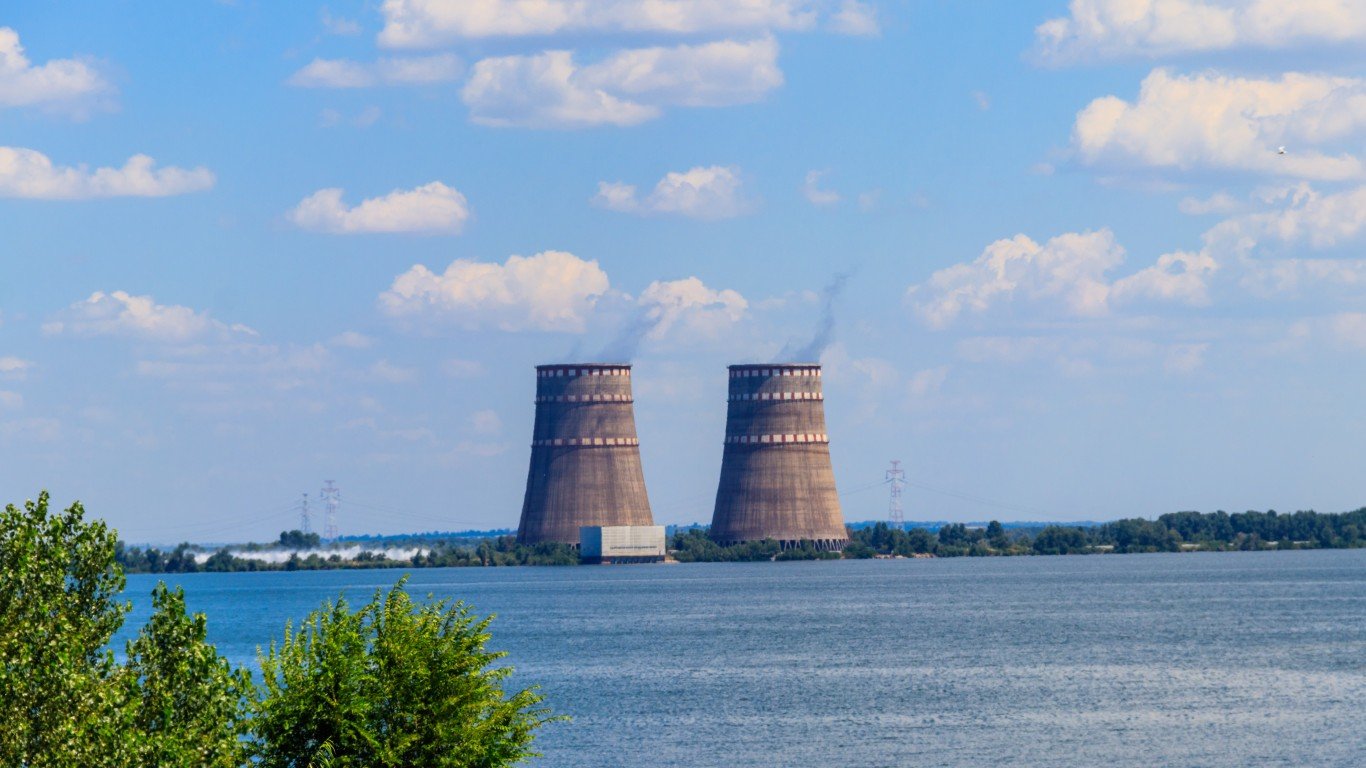
Ukraine
> No. of nuclear reactors, Nov 2022: 15
> Pct. of country energy supplied by nuclear, 2021: 55.0%
> No. of nuclear and radiology-related incidents since 1990: 48
The Chernobyl Nuclear Power Plant continued operations until December 2000, nearly 14 years after the April 26, 1986, meltdown of one of its reactors that caused the worst nuclear accident on record, an accident that made the vicinity radioactive for the next 20,000 years. Between 1990 and the plant’s permanent shutdown, Ukraine reported 18 other incidents at the plant, including two that measured level 3 on the INES. in April 1991 and November 1995.
One other INES level 3 event occurred at a nuclear plant in western Ukraine in February 1991. Russian President Vladimir Putin recently announced the appropriation of Ukraine’s Zaporizhzhia nuclear power plant, the largest in Europe, a move that Ukraine calls “null and void.”
[in-text-ad-2]

United Arab Emirates
> No. of nuclear reactors, Nov 2022: 3
> Pct. of country energy supplied by nuclear, 2021: 1.3%
> No. of nuclear and radiology-related incidents since 1990: 0
The United Arab Emirates and Belarus are the only two countries with nuclear power capabilities that have reported no mishaps (at nuclear plants or otherwise) since 1990. Part of the reason for this is that both countries are small, and their nuclear power industries have only recently begun. The UAE’s first and only nuclear power plant began operating commercially in April 2021, supplying only a fraction of the oil-rich country’s electricity needs.
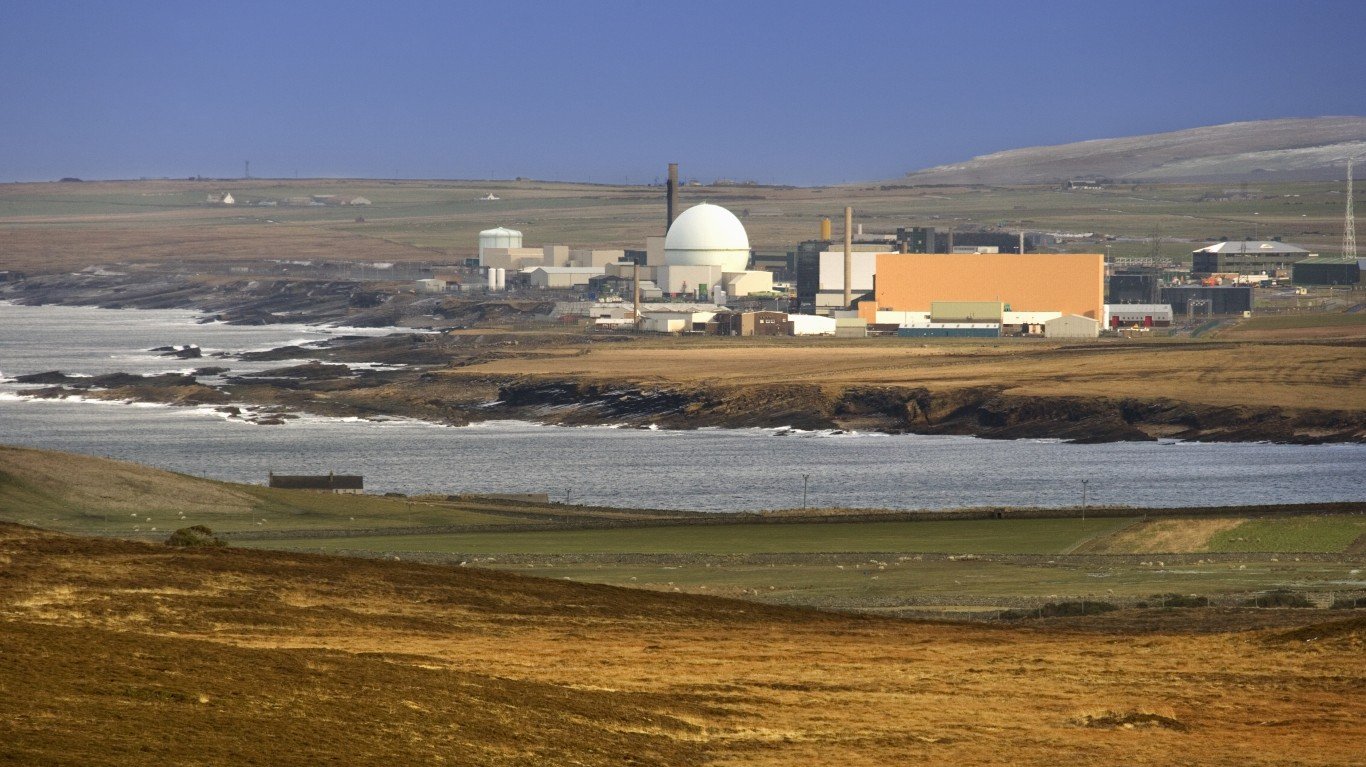
United Kingdom
> No. of nuclear reactors, Nov 2022: 9
> Pct. of country energy supplied by nuclear, 2021: 14.8%
> No. of nuclear and radiology-related incidents since 1990: 45
The United Kingdom has used nuclear power since the 1950s. Most of its reported nuclear and radiological-related incidents since 1990 involve nuclear power facilities, notably the Sellafield multi-function nuclear site on the coast of Cumbria in northwestern England. In 1957, the Windcastle Fire at Sellafield was an INES level 6 accident.
All but two of the incidents since 1990 measured below INES level 3. The first of the two level 3 events occurred at Sellafield in September 1992, when plutonium nitrate leaked from a corroded pipe into a containment cell while safety devices failed to detect further leakage out of the cell. The second level 3 incident took place in April 2005, when a fractured pipe at a reprocessing plant at Sellafield leaked uranium and plutonium dissolved in nitric acid.
[in-text-ad]
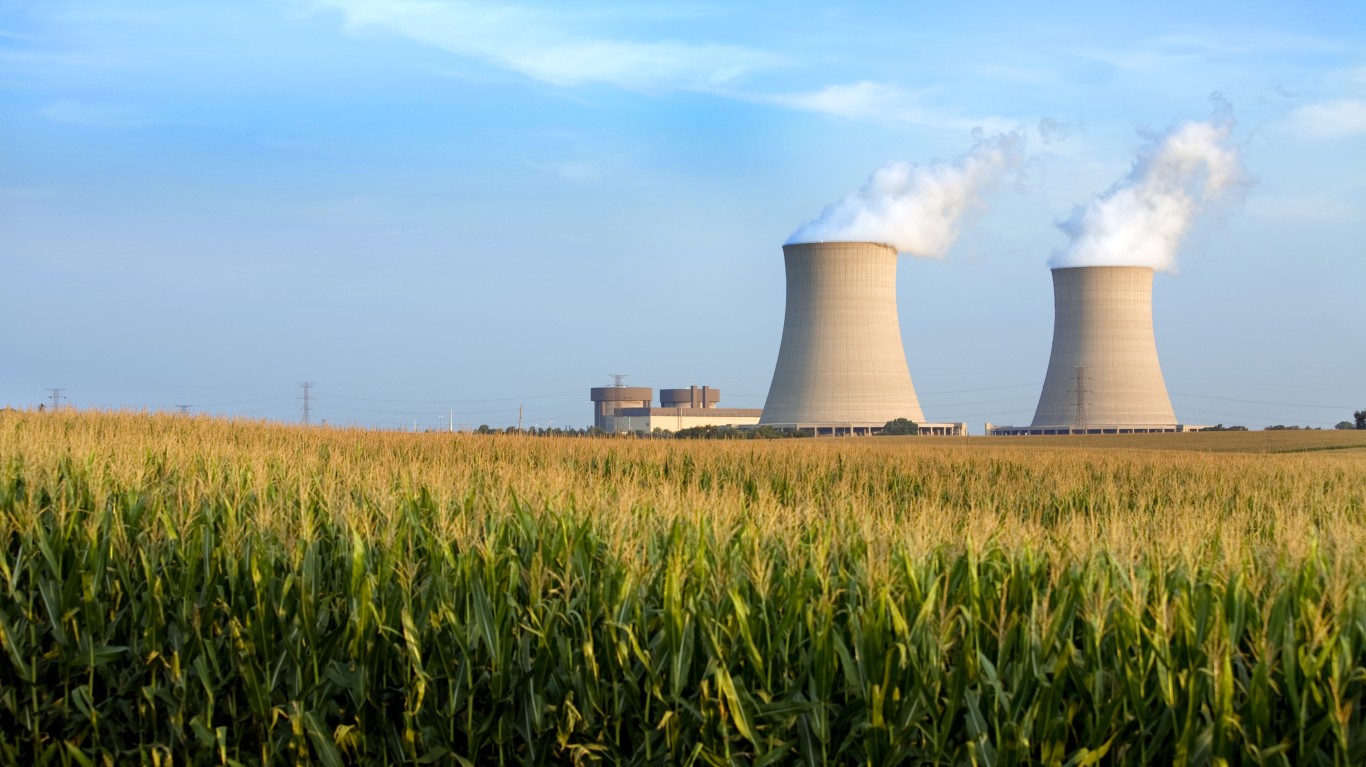
United States of America
> No. of nuclear reactors, Nov 2022: 92
> Pct. of country energy supplied by nuclear, 2021: 19.6%
> No. of nuclear and radiology-related incidents since 1990: 137
Having the world’s largest nuclear power plant industry and a large number of industries that use irradiated materials, it should be no surprise that the United States reported the most nuclear and radiological-related incidents since 1990. France is the only other country with more than 100 of these events during that time.
Though there were several INES level 4 accidents in the U.S. before 1990, including INES level 5 at Three Mile Island in 1979, all but three of the events since 1990 rated below INES level 3. The three level 3 events included a March 2002 incident at the Davis-Besse Nuclear Power Station in Oak Harbor, Ohio, when an inspector discovered a severely eroded reactor component that could have caused a more serious incident.
Take This Retirement Quiz To Get Matched With A Financial Advisor (Sponsored)
Take the quiz below to get matched with a financial advisor today.
Each advisor has been vetted by SmartAsset and is held to a fiduciary standard to act in your best interests.
Here’s how it works:
1. Answer SmartAsset advisor match quiz
2. Review your pre-screened matches at your leisure. Check out the
advisors’ profiles.
3. Speak with advisors at no cost to you. Have an introductory call on the phone or introduction in person and choose whom to work with in the future
Take the retirement quiz right here.
Thank you for reading! Have some feedback for us?
Contact the 24/7 Wall St. editorial team.

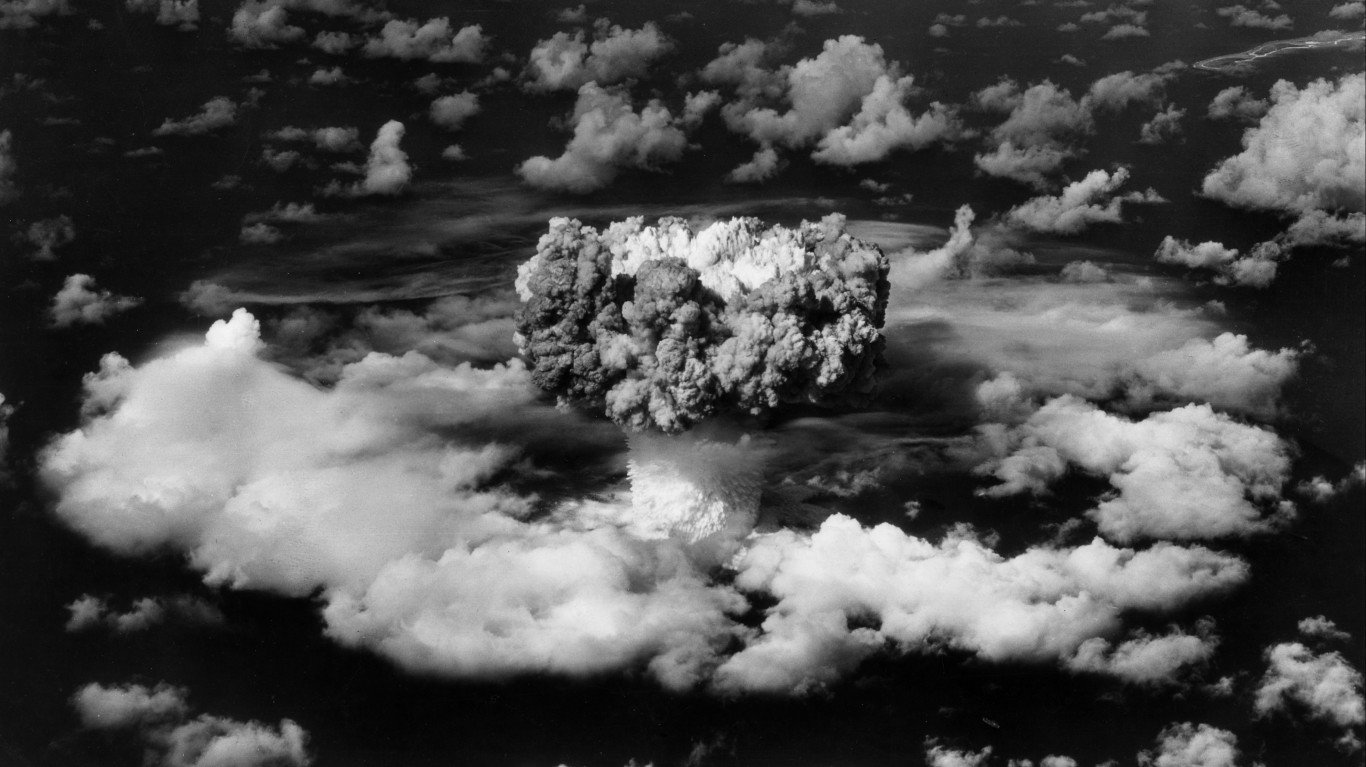 24/7 Wall St.
24/7 Wall St.
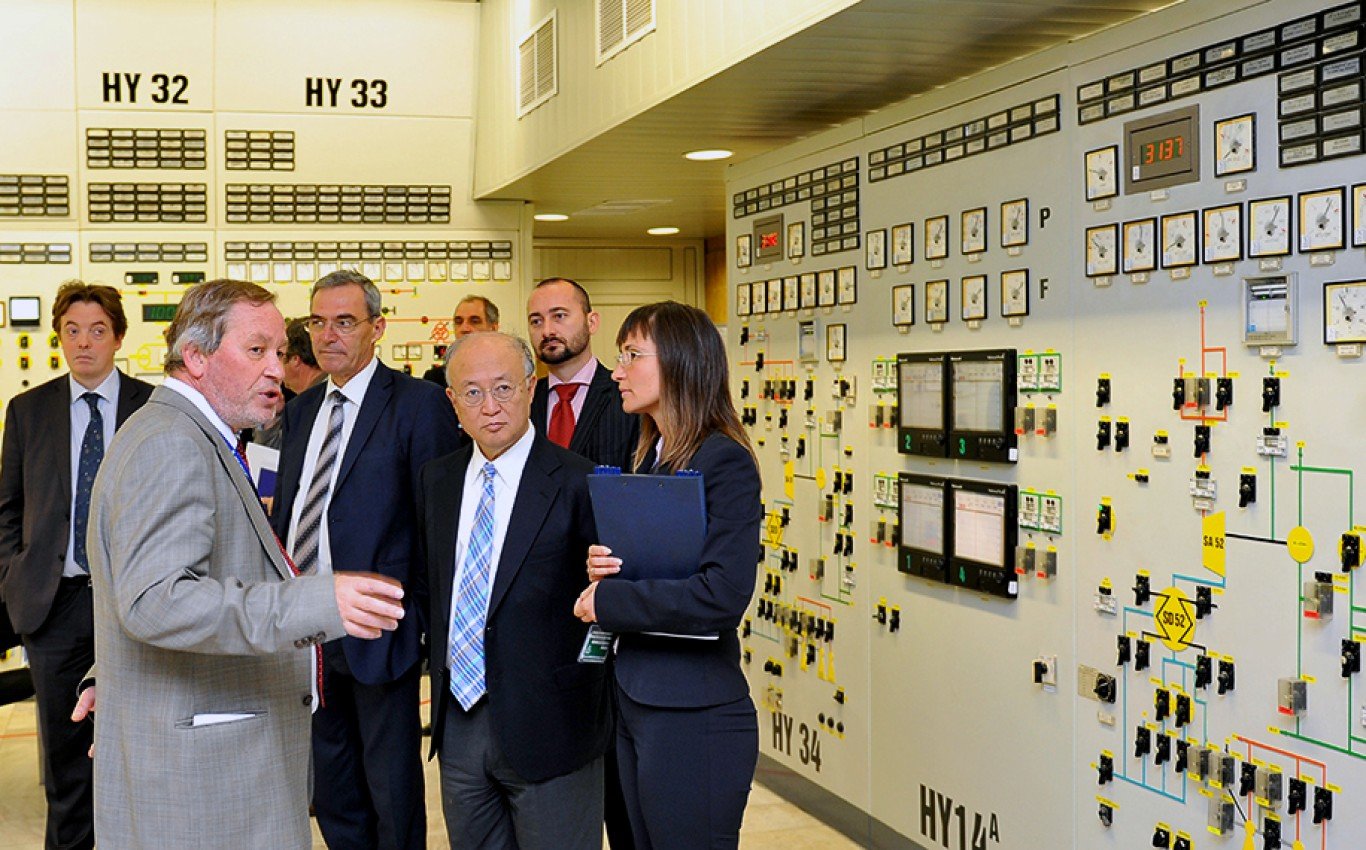
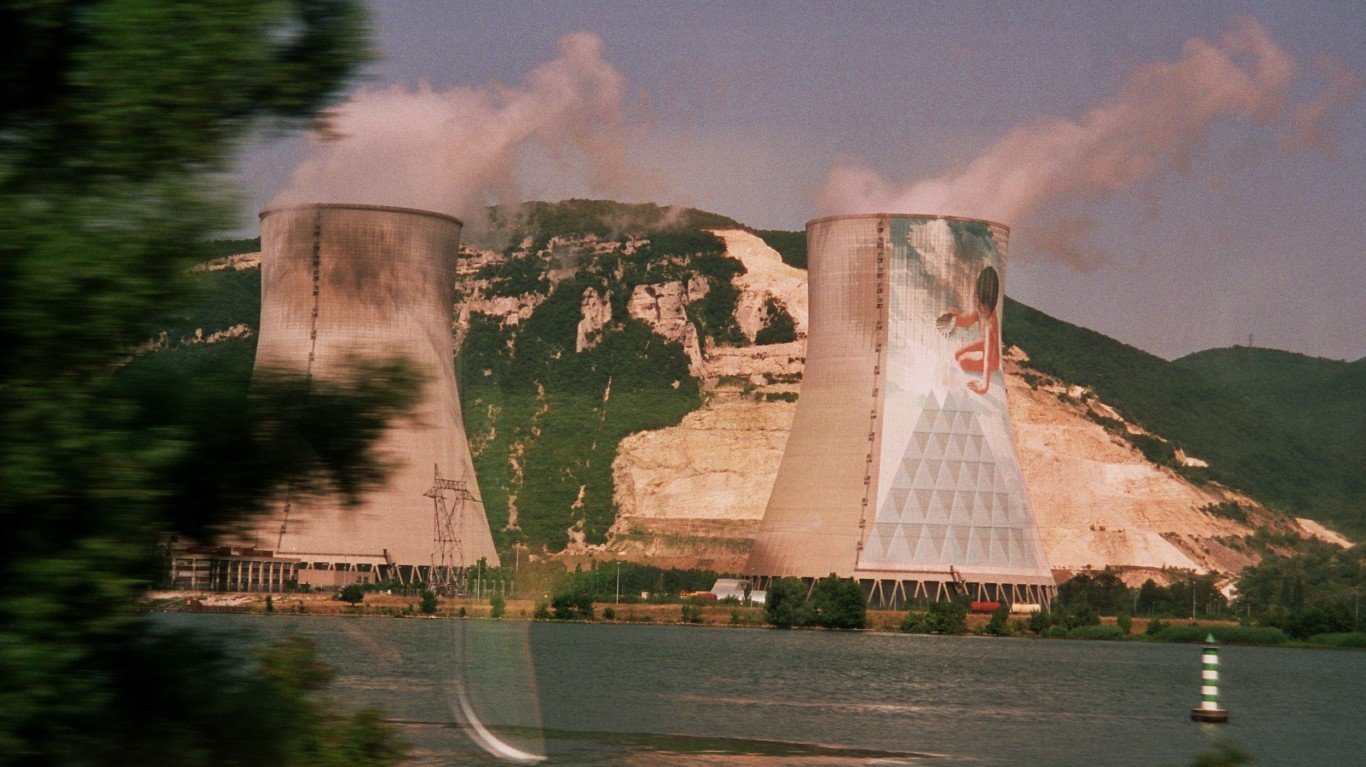
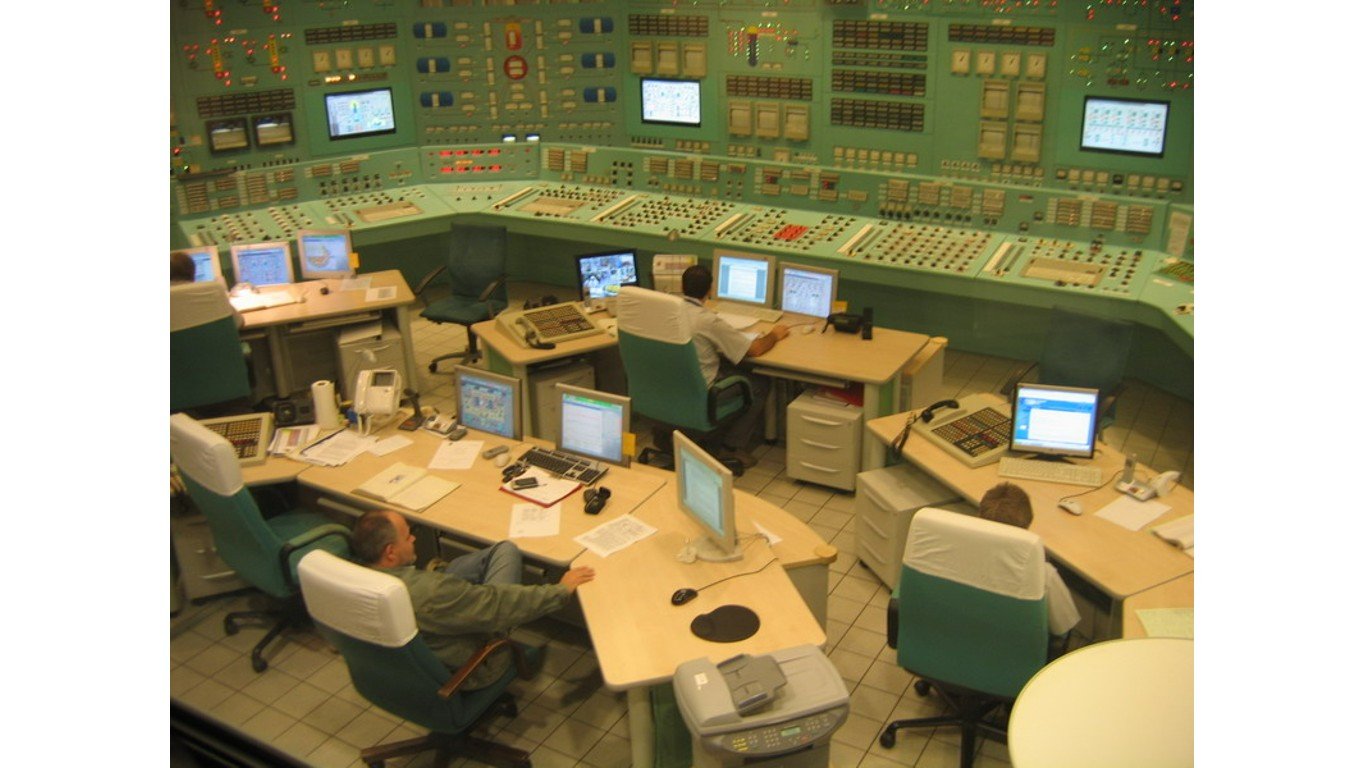
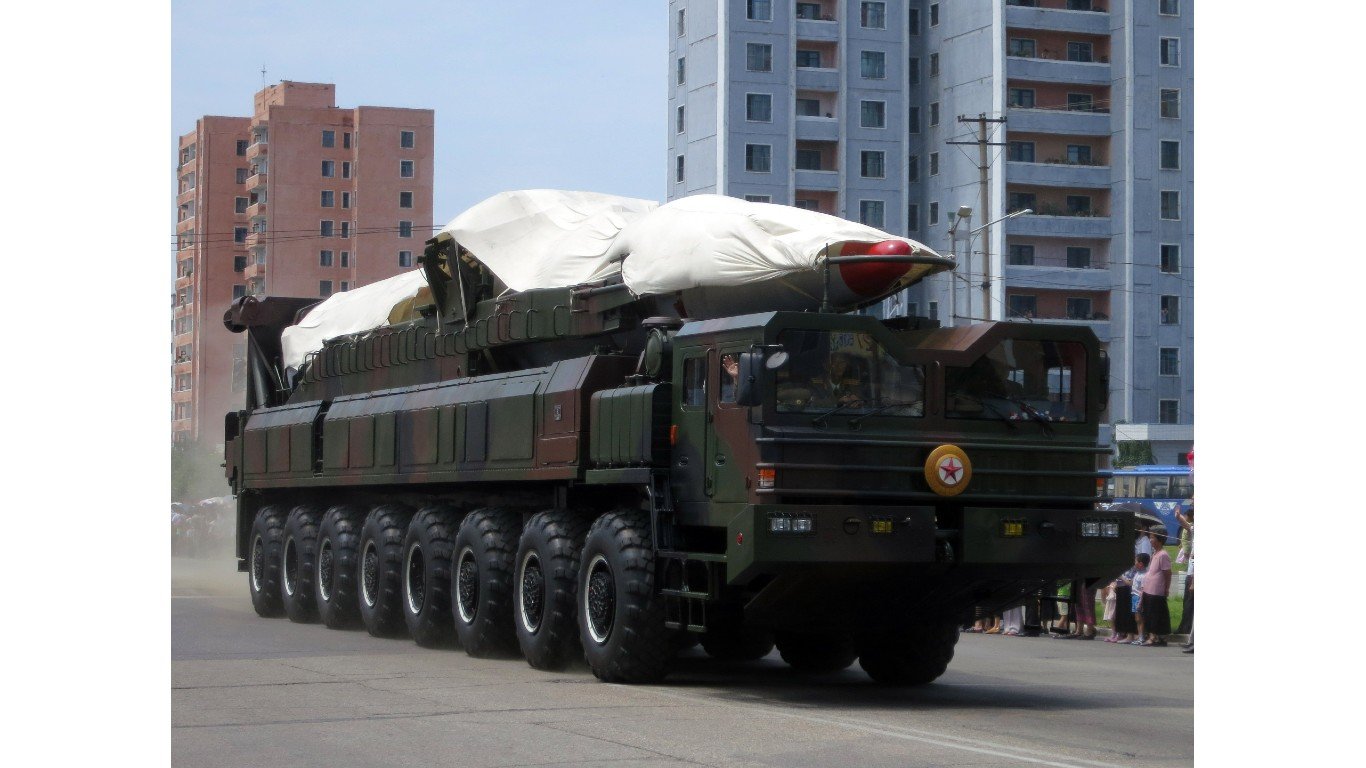
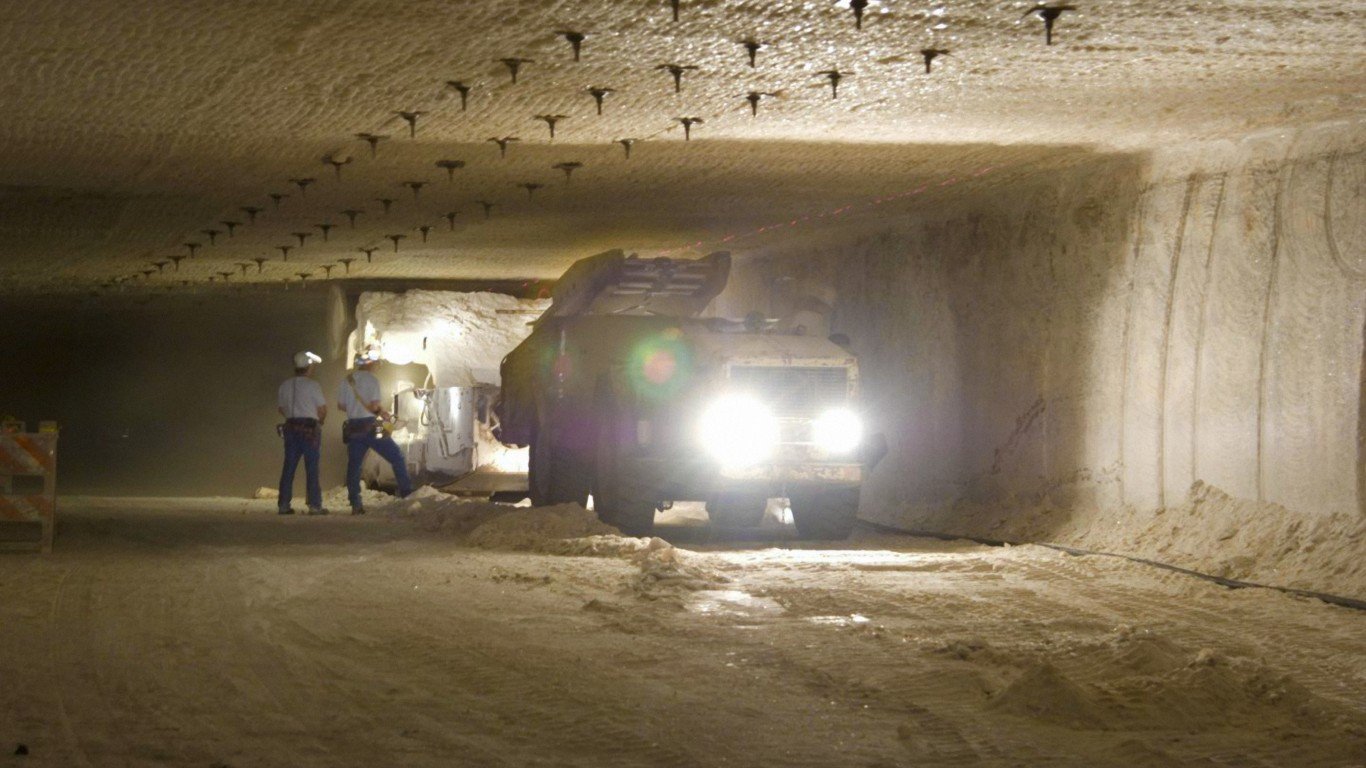
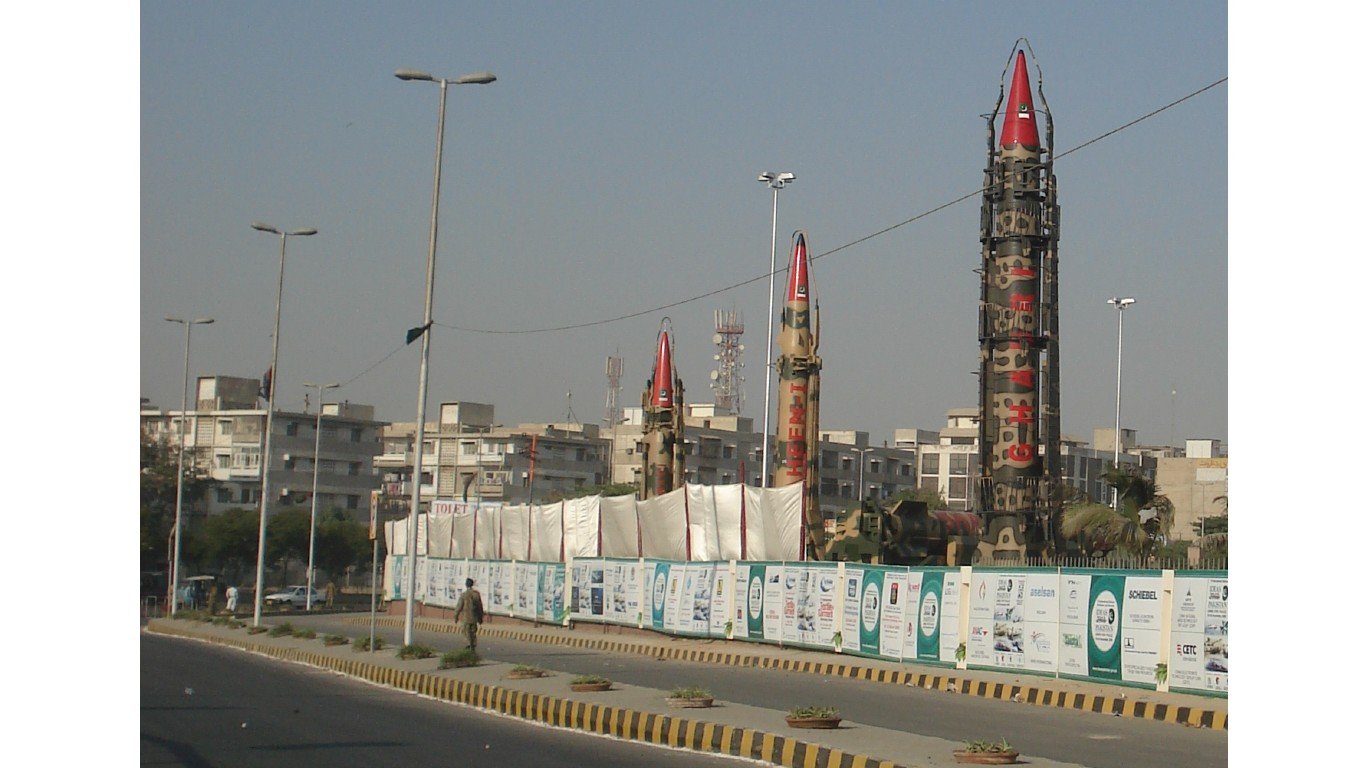
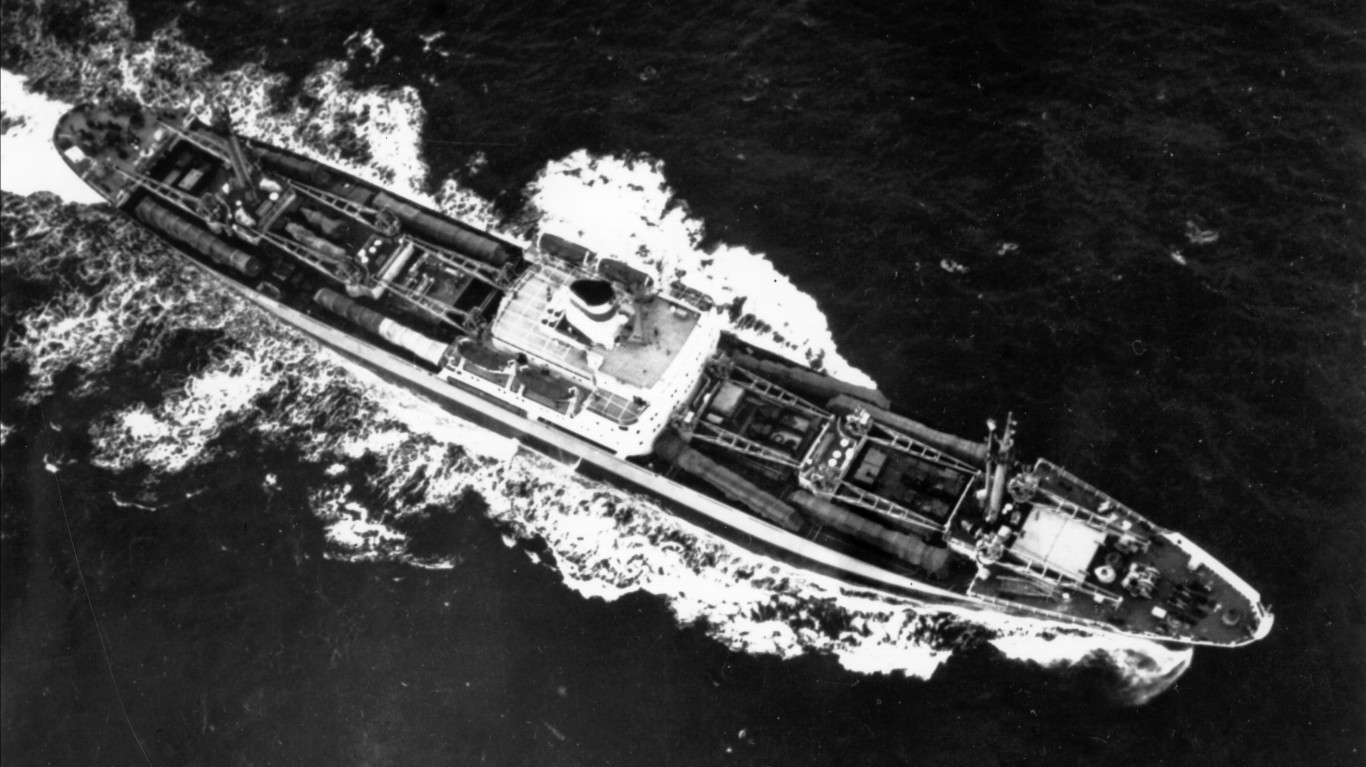 24/7 Wall St.
24/7 Wall St.